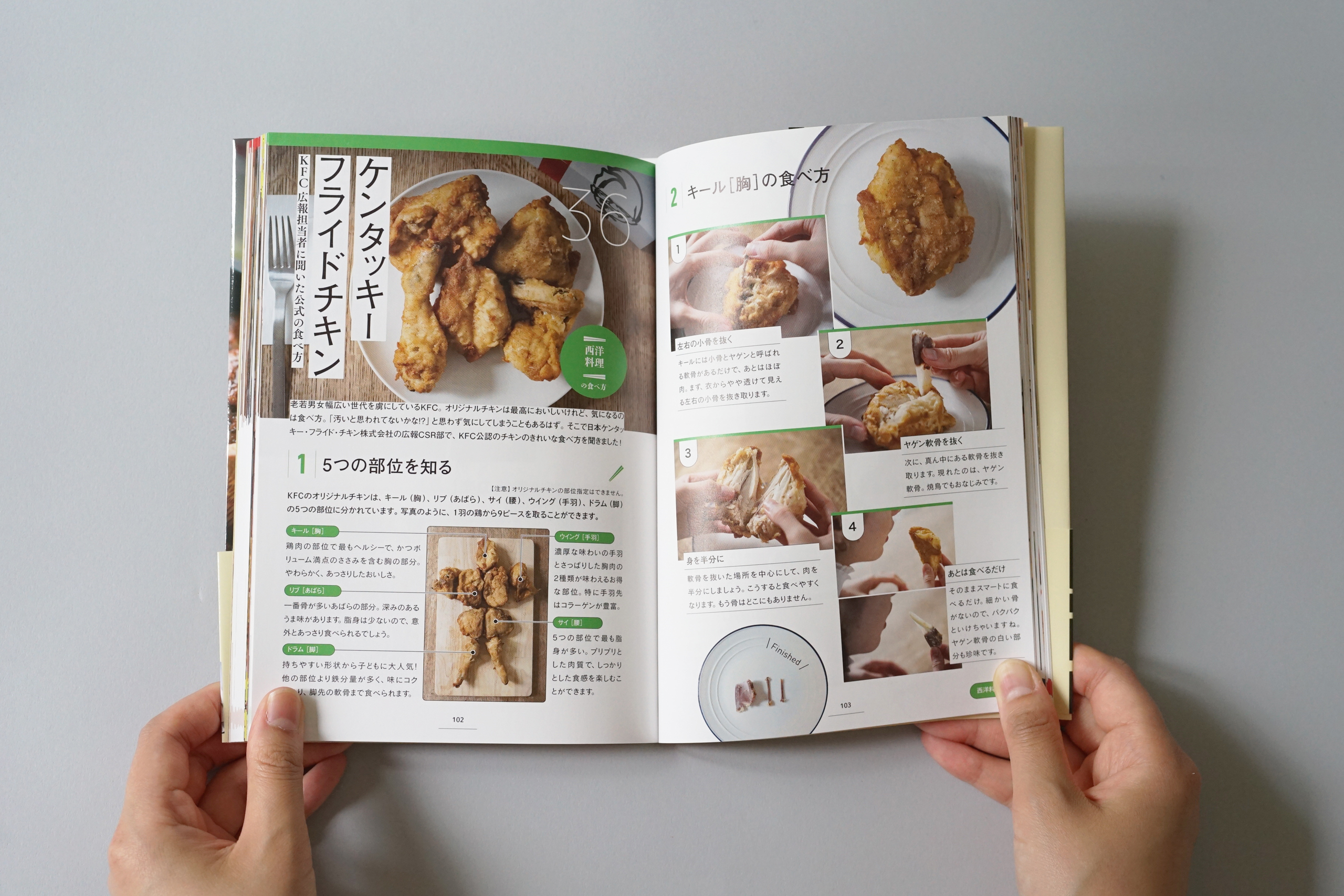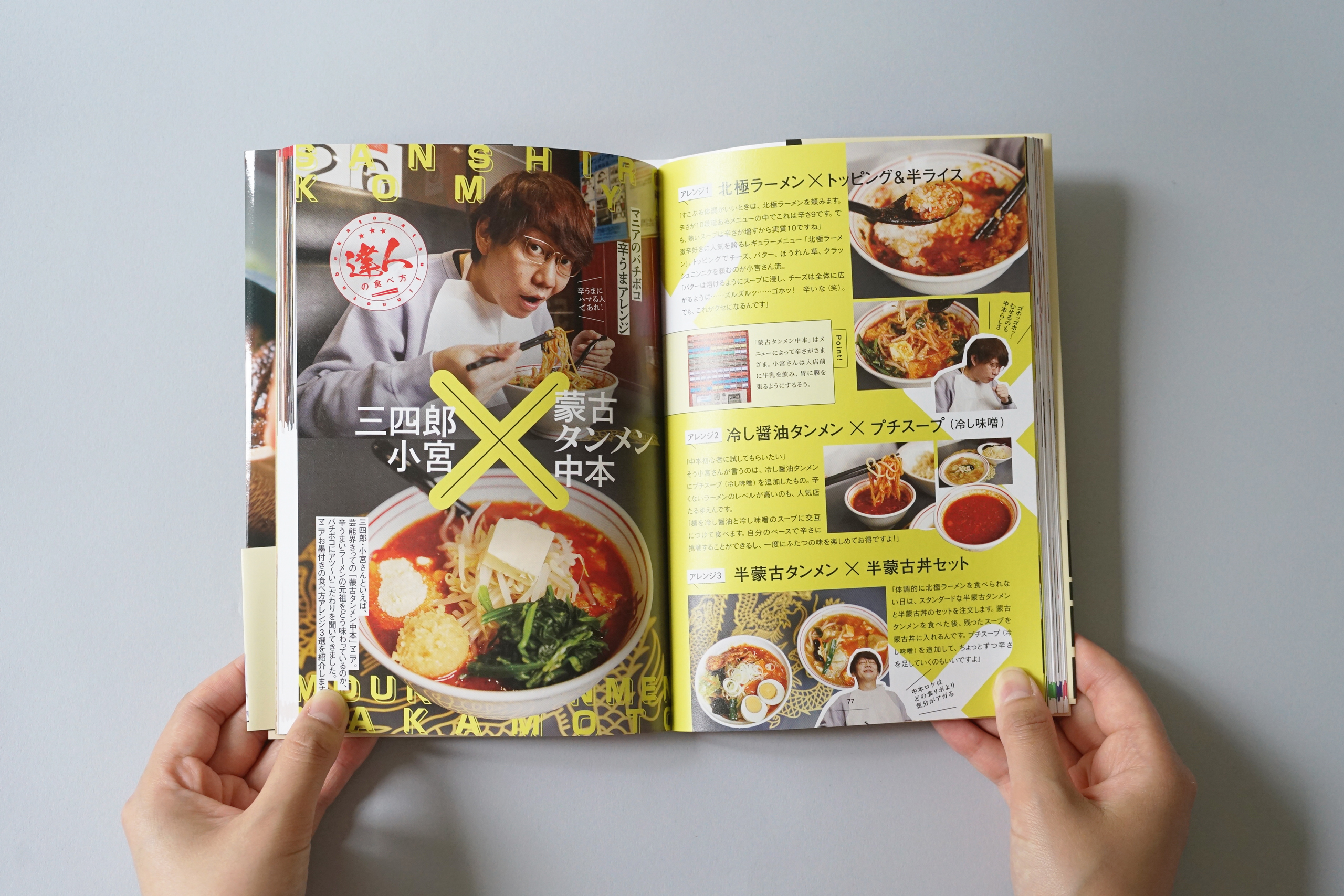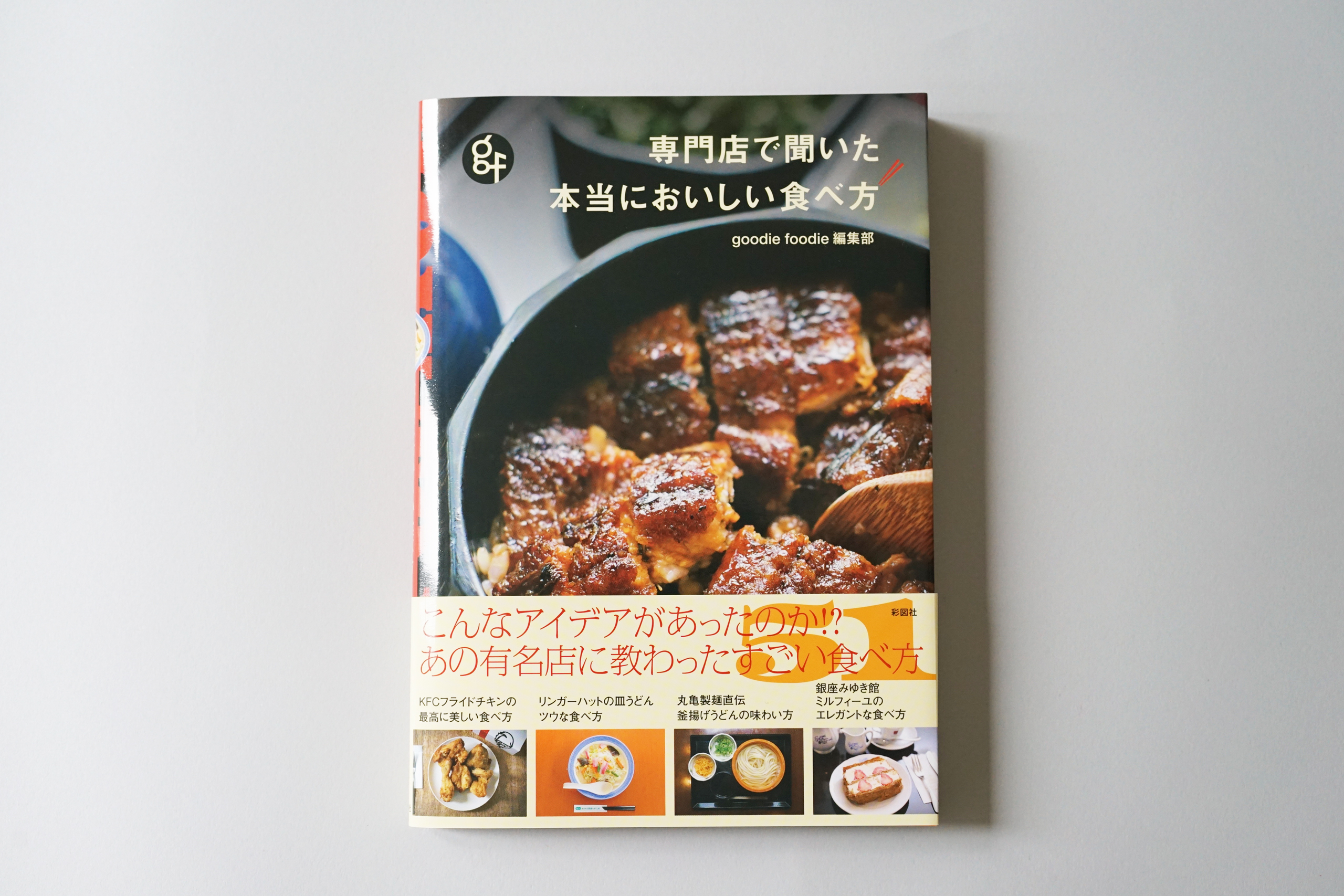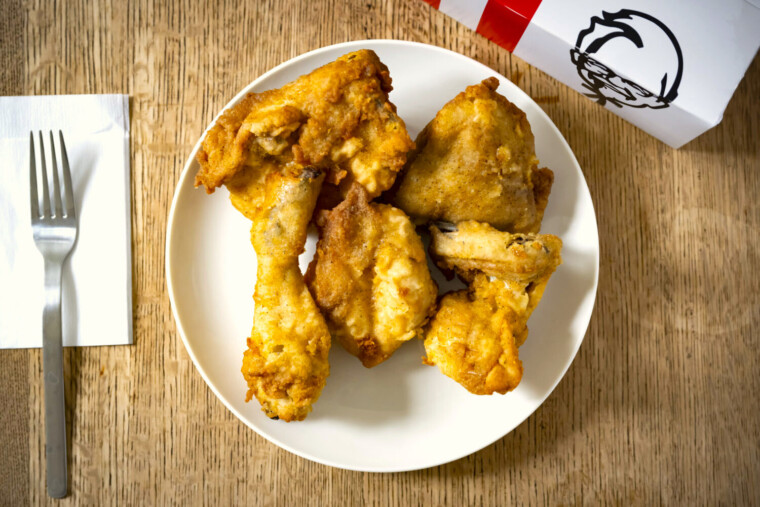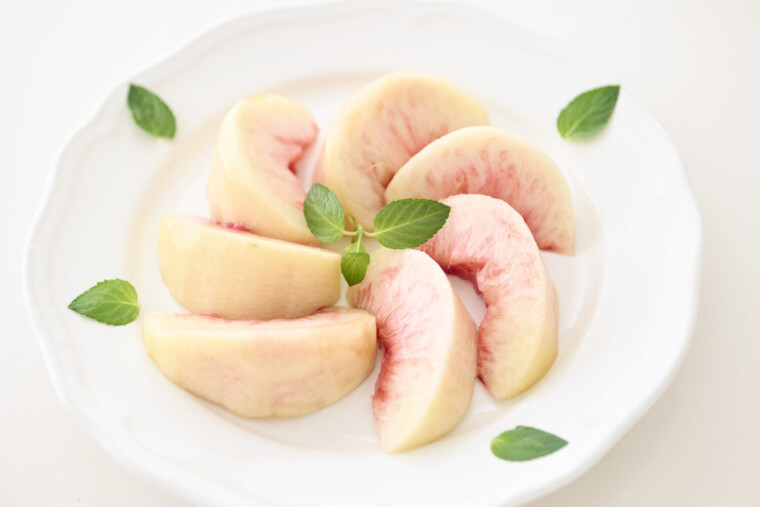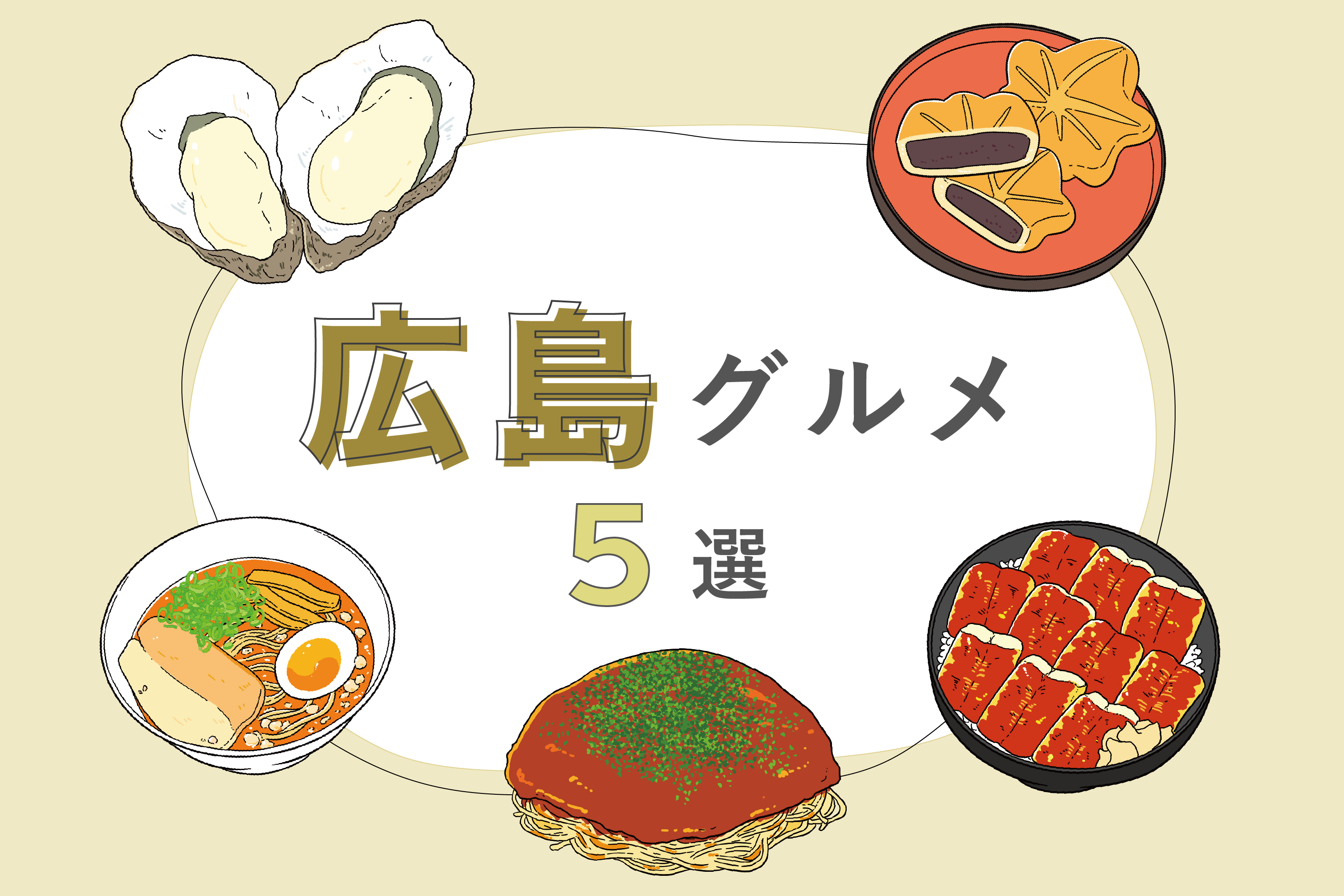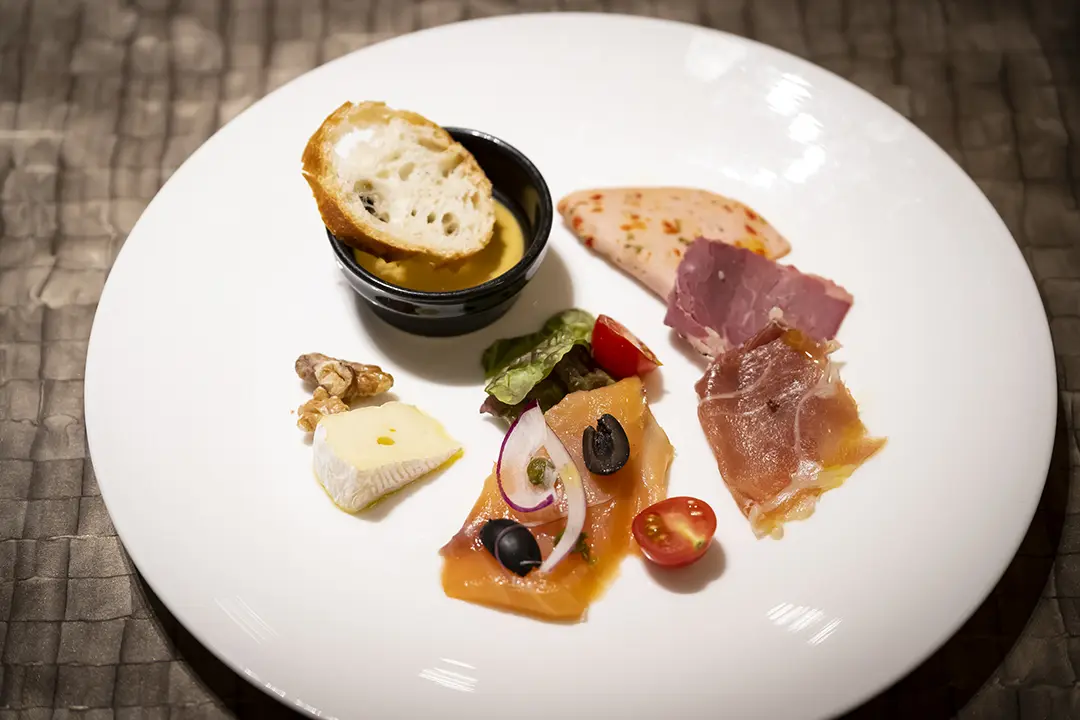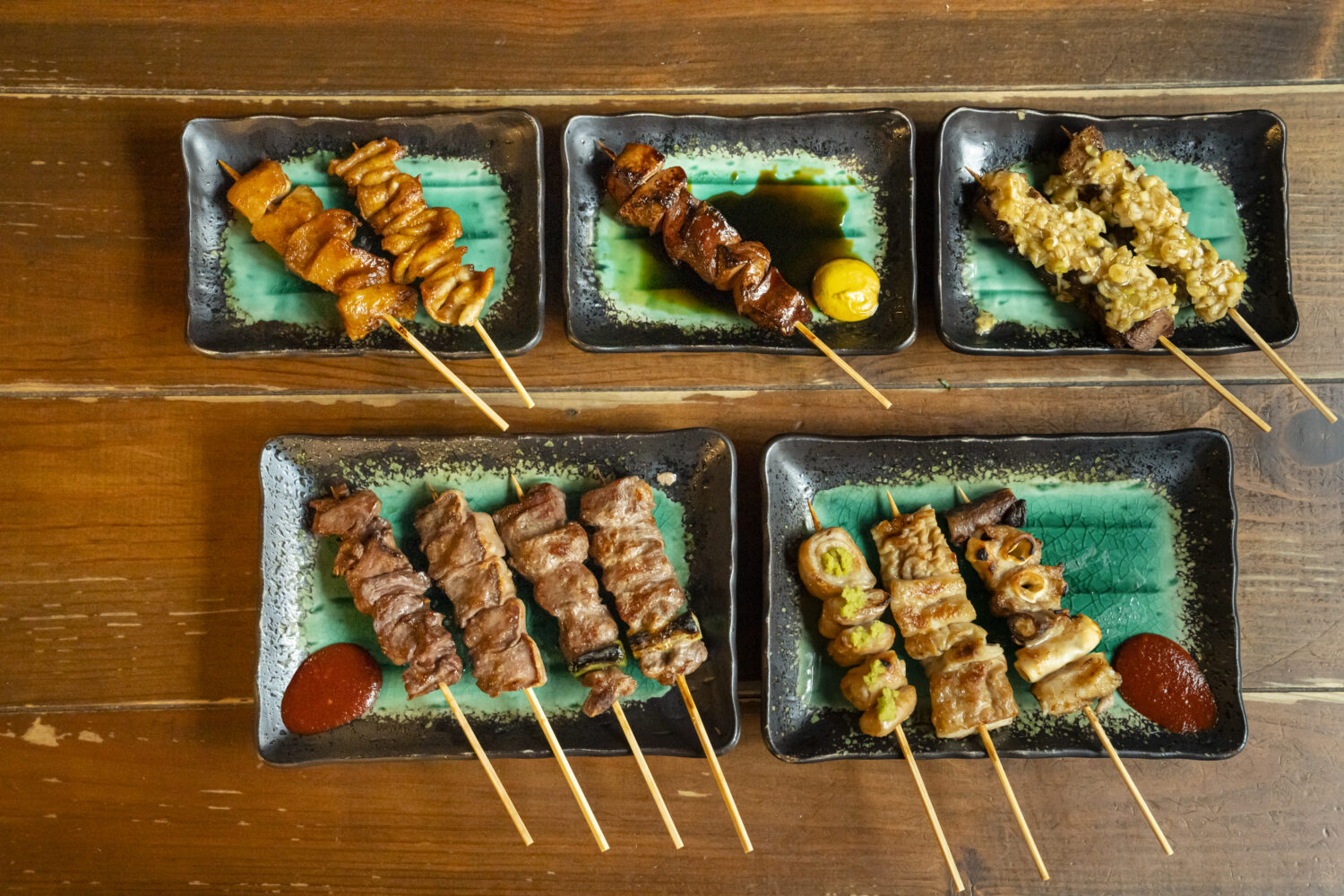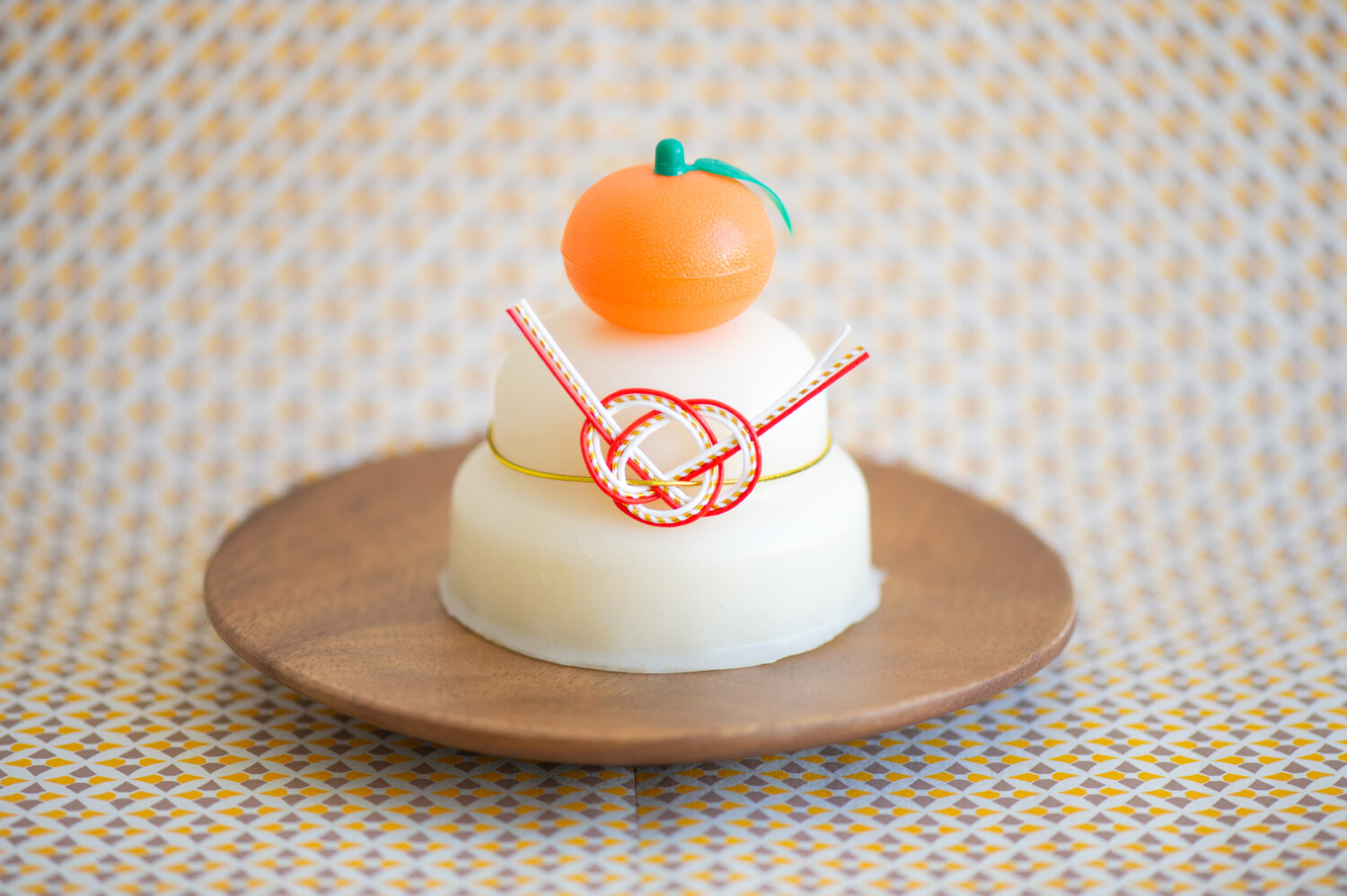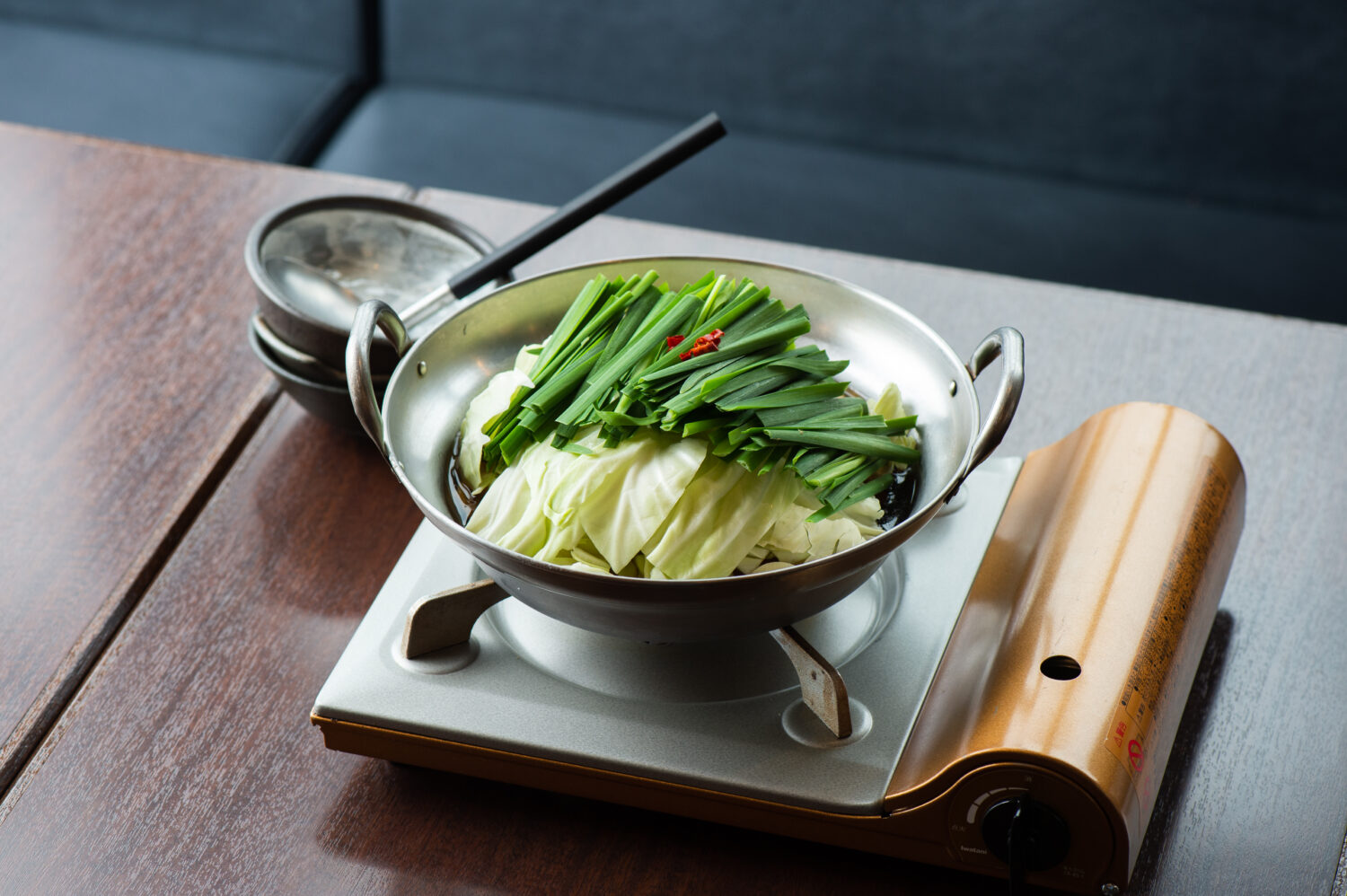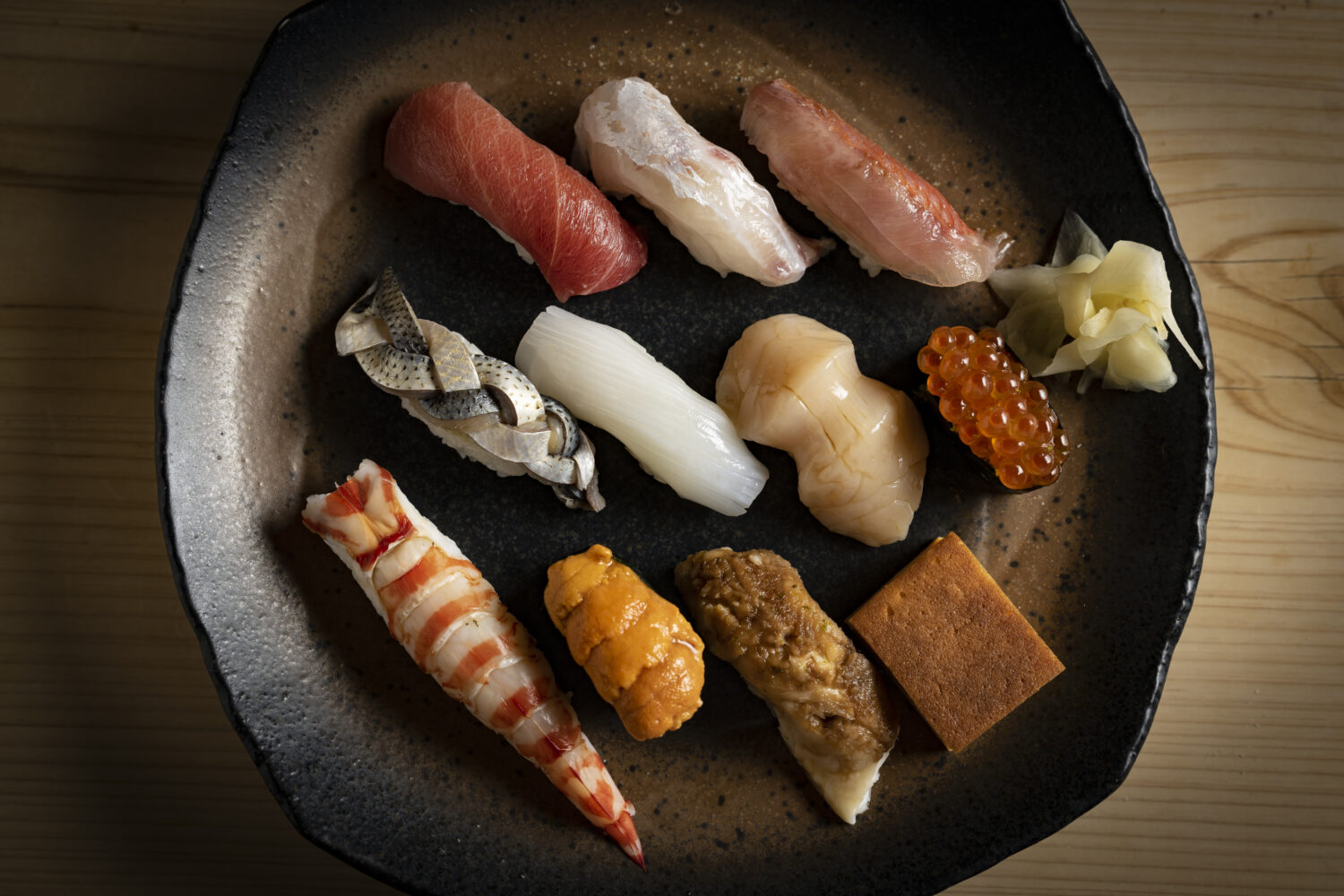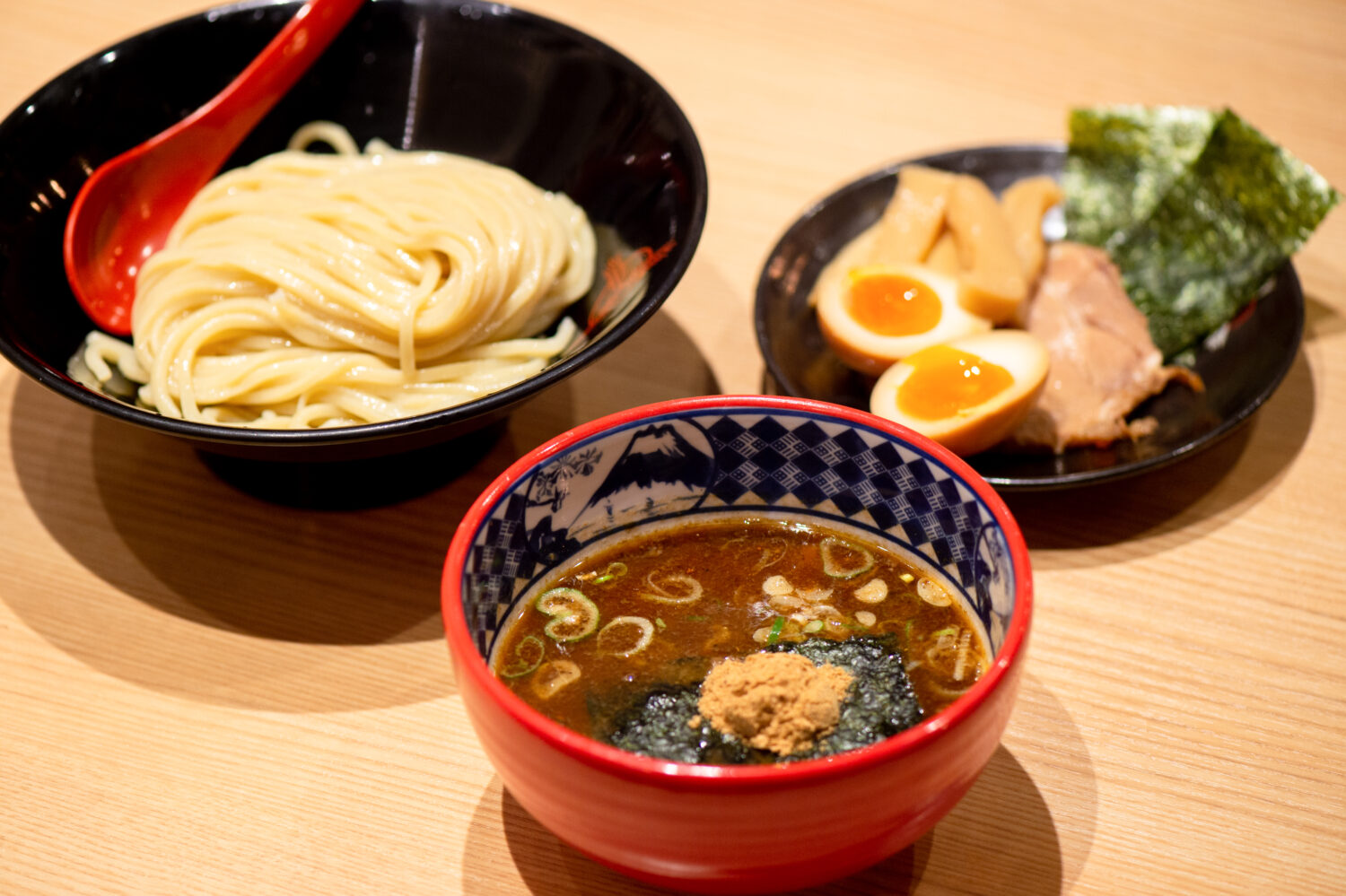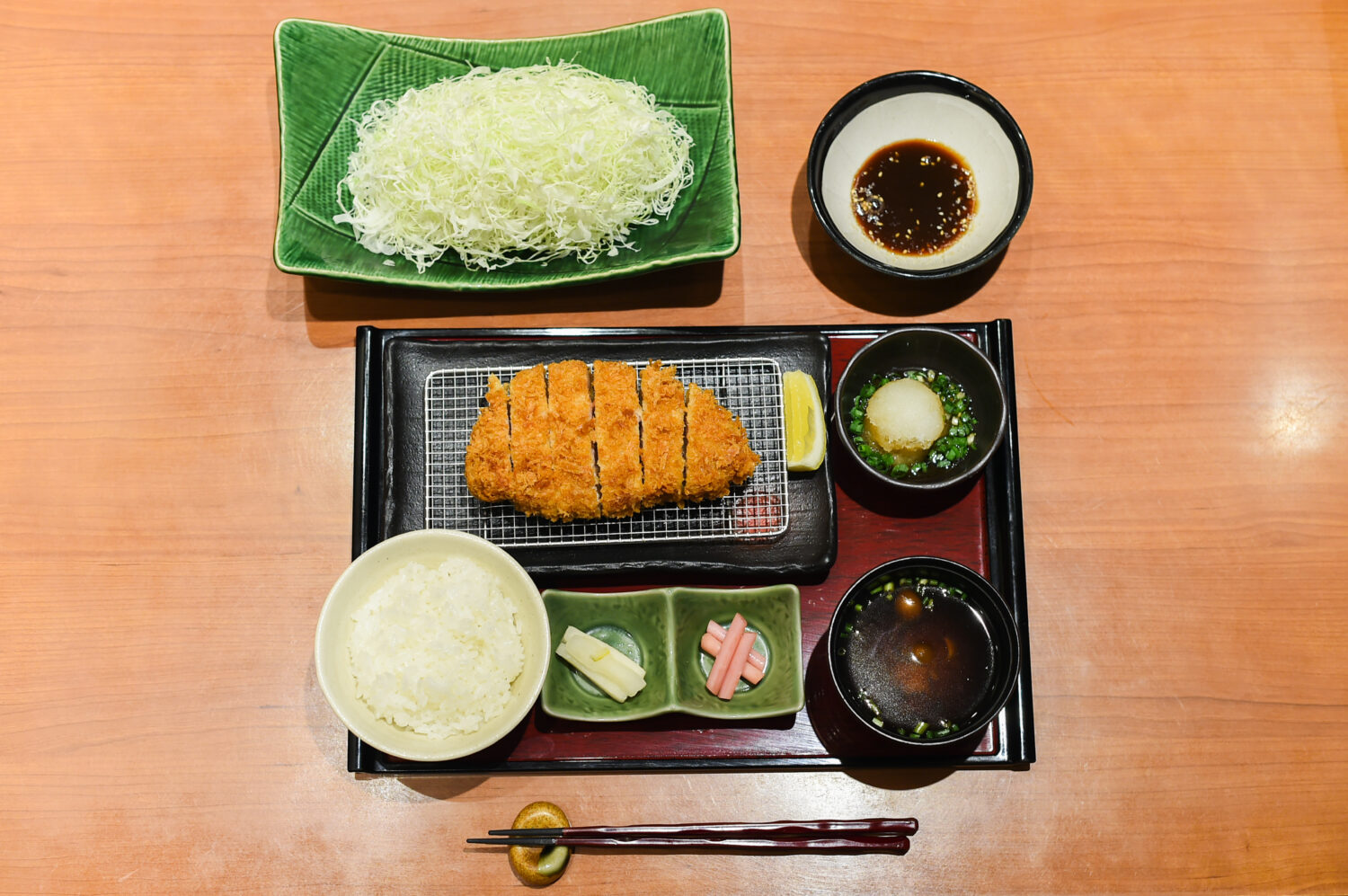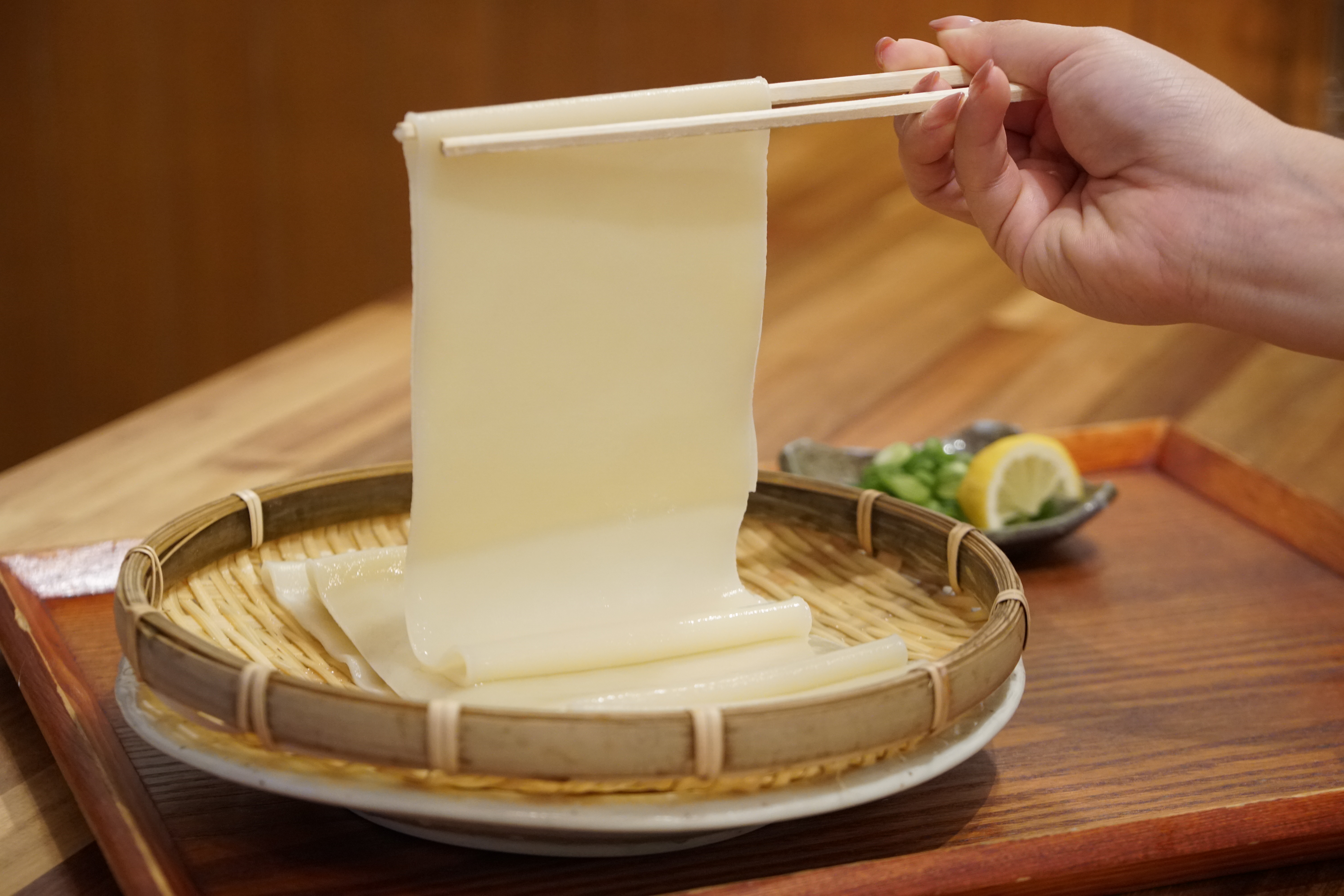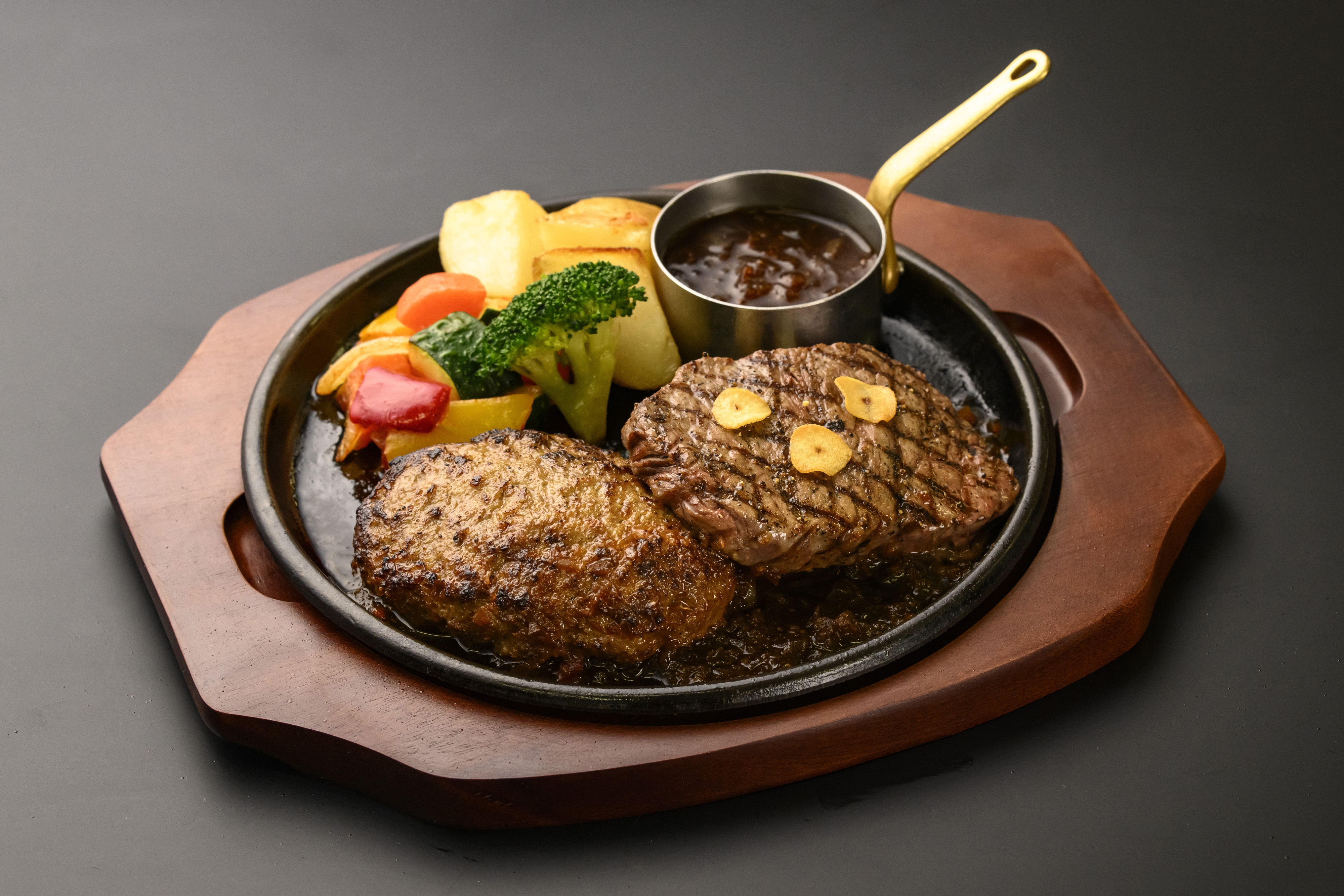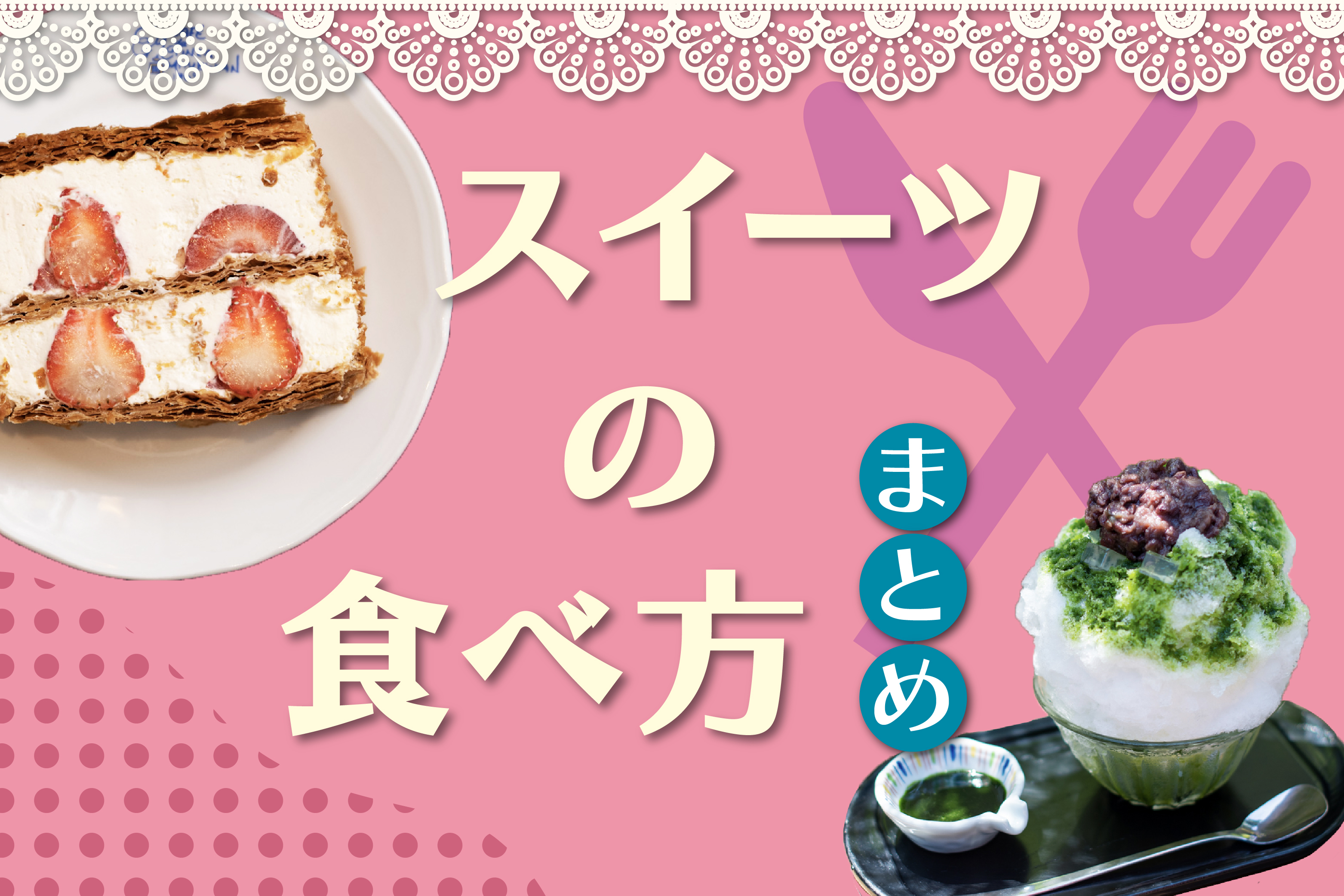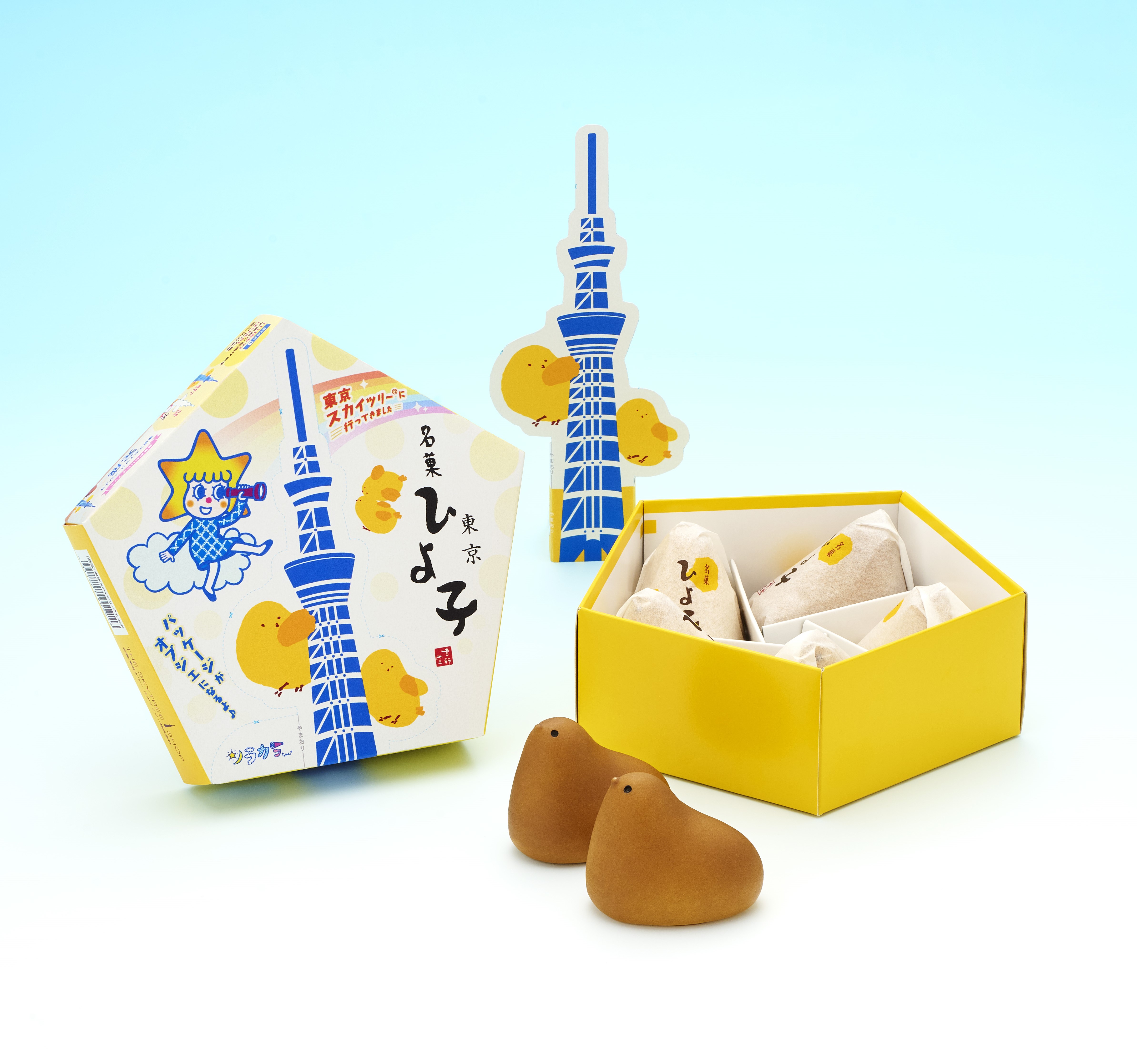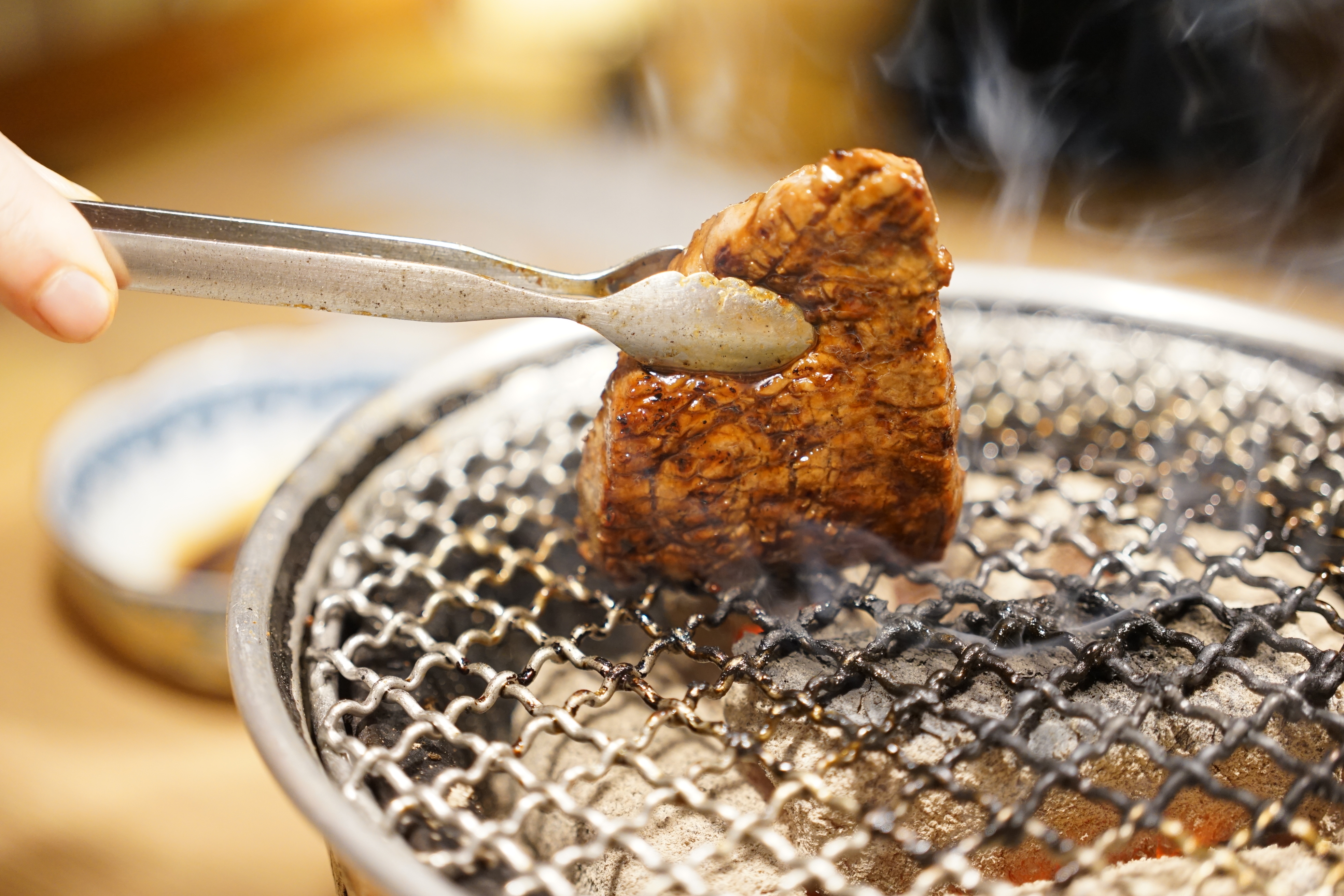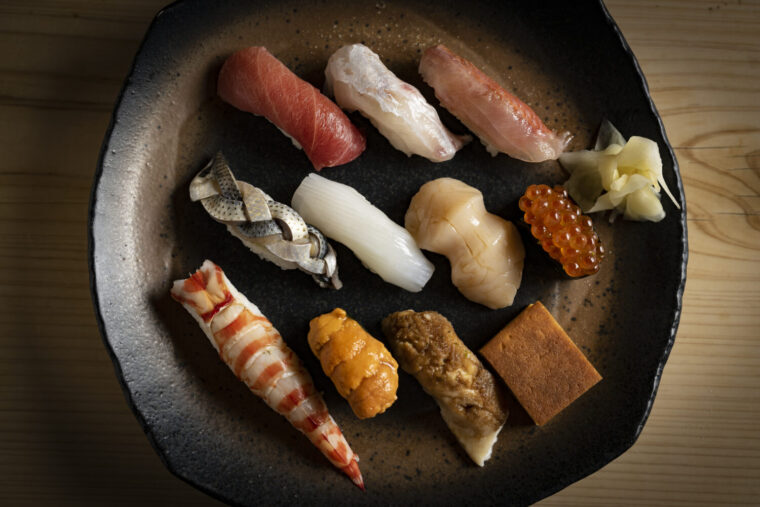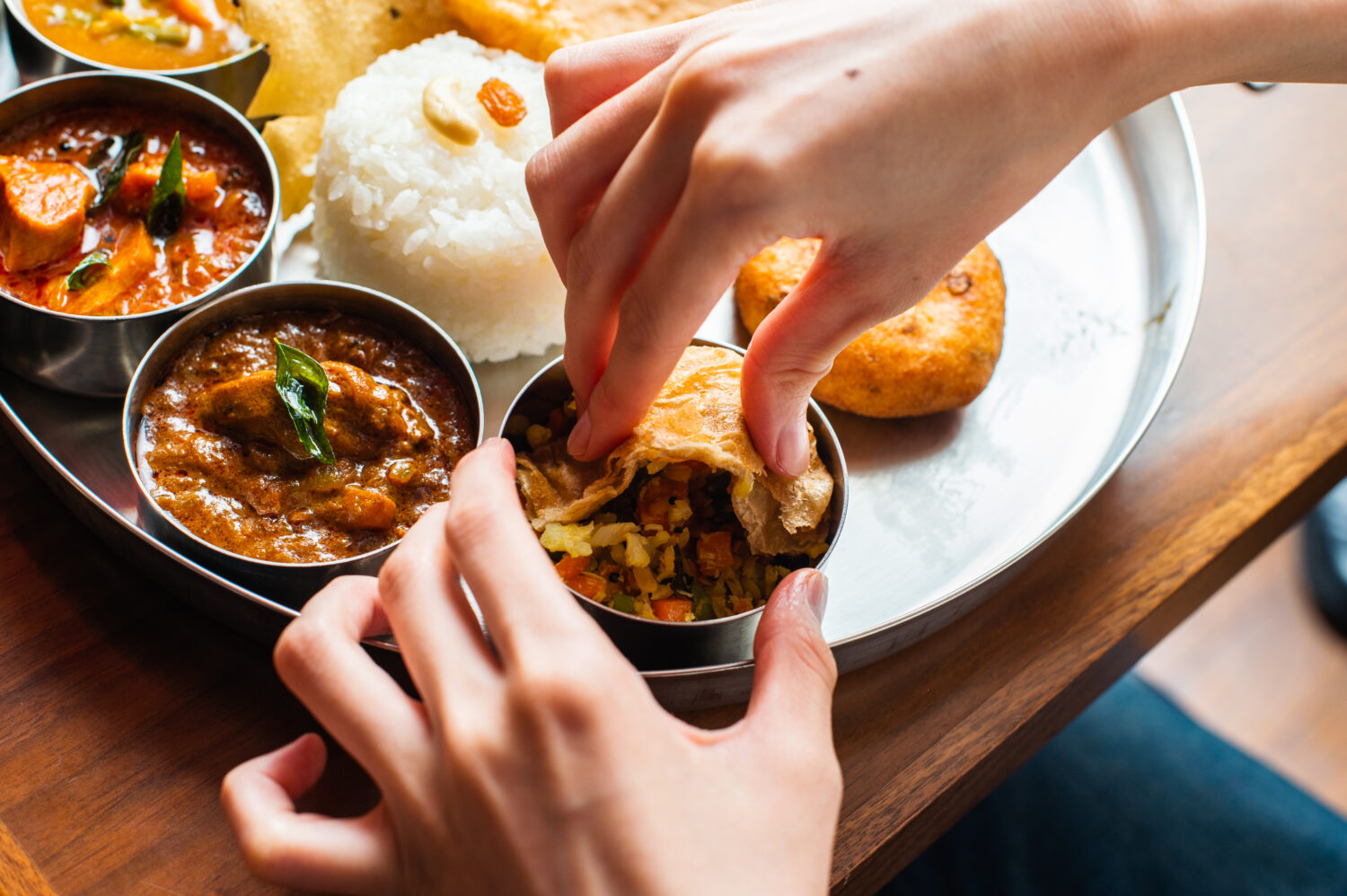
How to Eat an Indian Thali: A Complete Guide to Curries, Chutneys, and Traditions
When you visit an Indian restaurant, you’ve probably seen several types of curry served on a large silver platter. This is called a “thali,” a traditional Indian set meal.
This time, we visited “Ajanta,” an authentic Indian curry restaurant in Kojimachi, Tokyo, to learn how to enjoy a thali the smart way — perfect even for first-timers trying Indian curry.
share:
Table of Contents
Make Space on the Large Plate
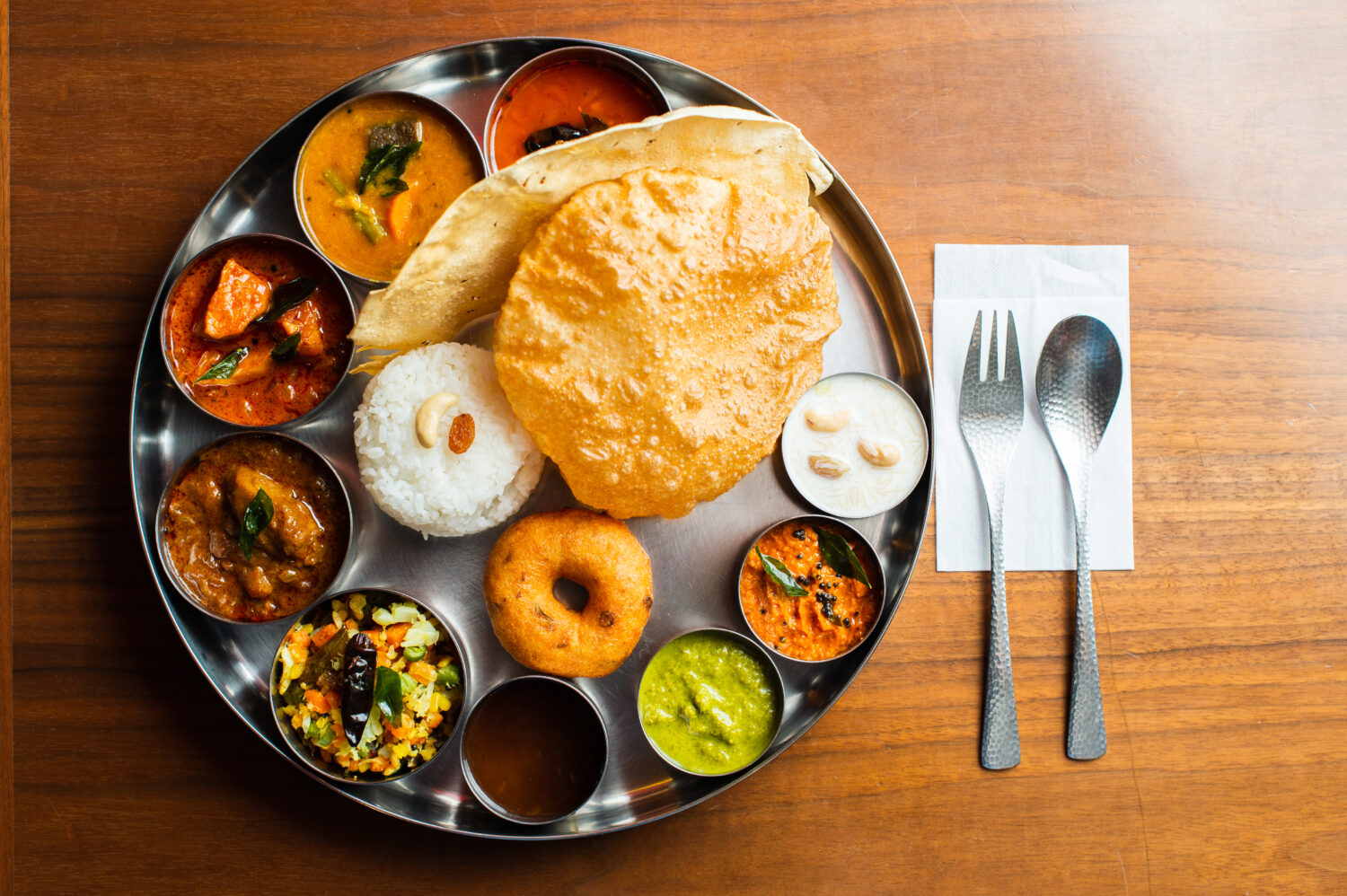
This time, we tried the non-vegetarian thali at “Ajanta.” A “thali” refers to the large silver platter used to serve the dishes. On top of it are several types of curries, rice, and deep-fried bread called puri. In North India, this set meal is called a “thali,” while in South India it is known as a “meals.”

First, prepare the surface of the thali so you can comfortably enjoy your curry. This is part of the thali etiquette. Start by removing the four small bowls of chutney (explained later) from the plate.
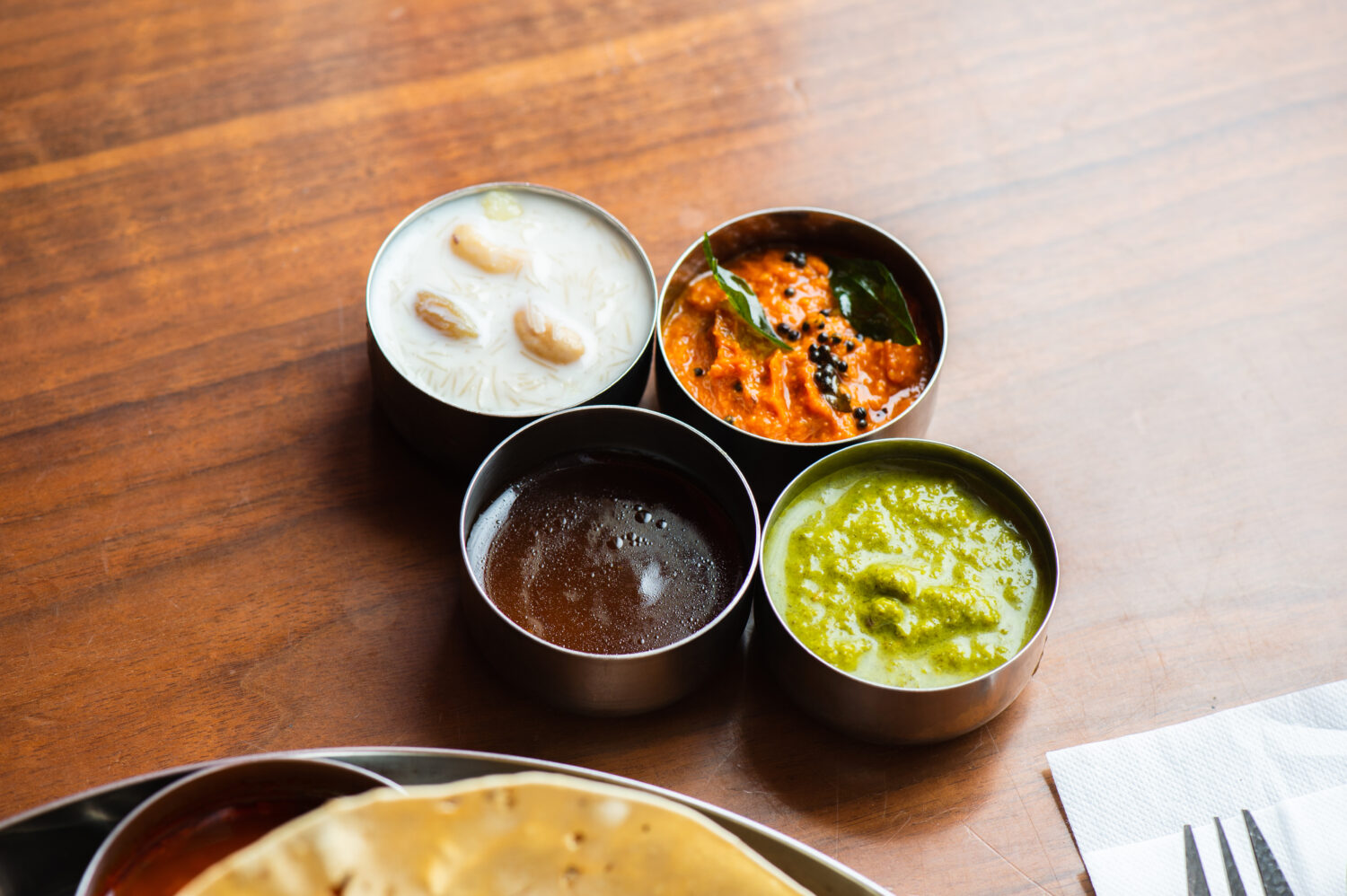
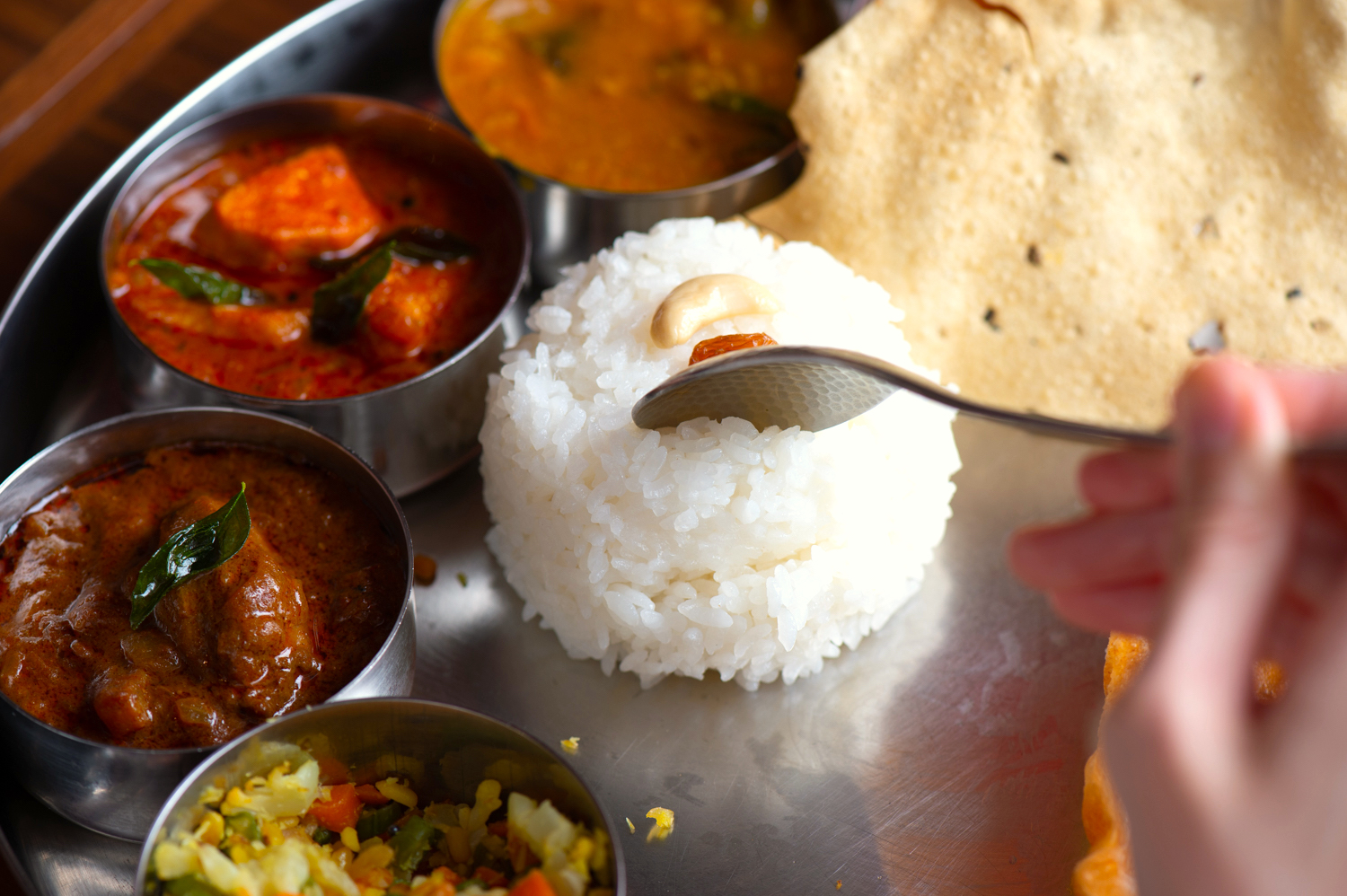
You can place the small bowls directly on the table. This gives you space on the thali to spread out the rice. More on that later.
Understanding Thali
Before you start eating, it’s helpful to understand what a thali is. A typical Indian thali features small bowls of soups, curries, and chutneys placed on a large platter, with rice and breads made from rice flour, bean flour, or wheat flour arranged in the center. Let’s go over each item.
① Puri
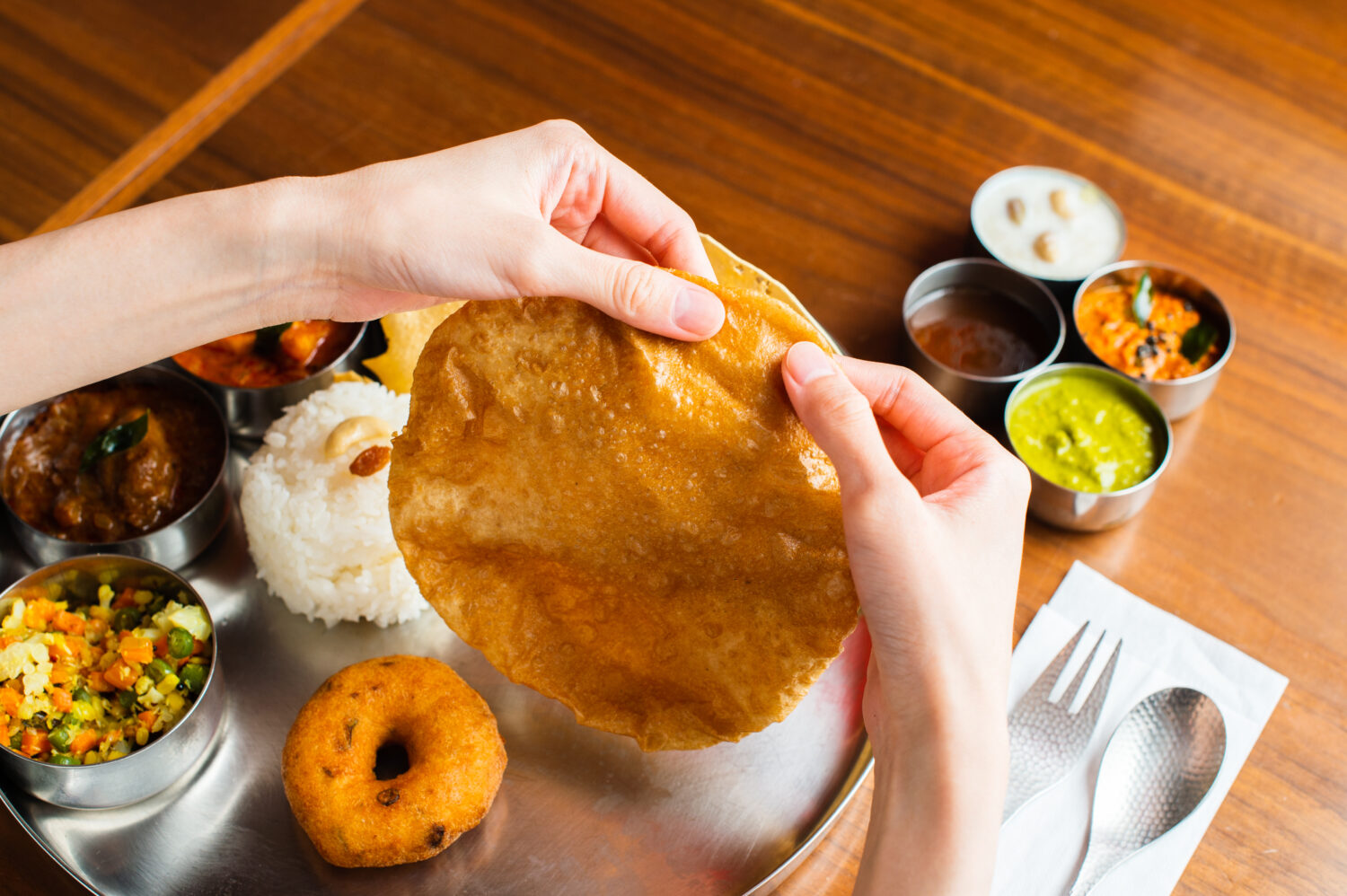
Puri is a thinly rolled, deep-fried whole wheat bread. Sometimes “chapati,” a similar whole wheat flatbread, is served instead. It’s different from the more commonly known “naan.”
② Vada
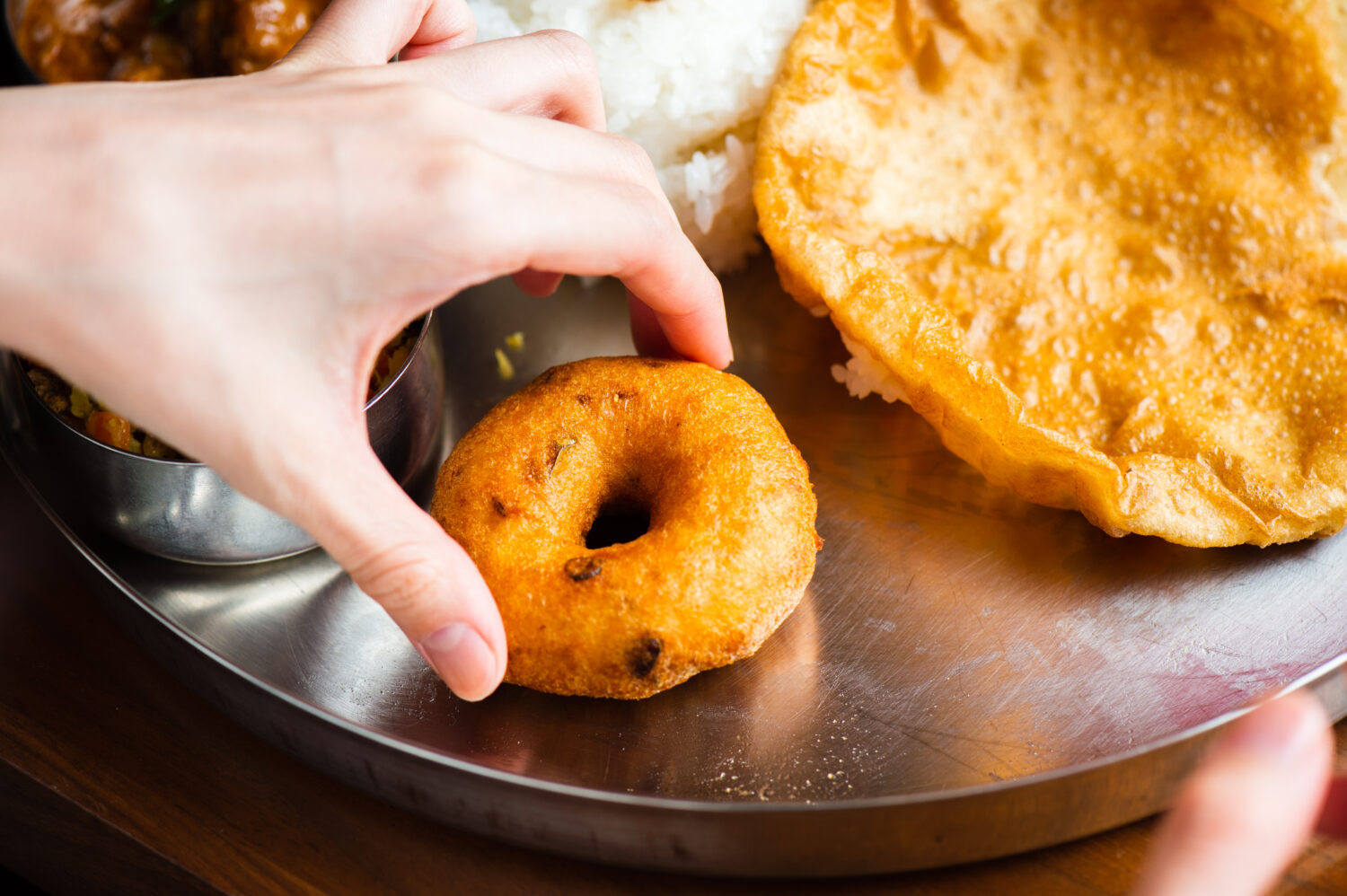
A savory donut made from beans and rice. Crispy on the outside and soft on the inside.
③ Papad
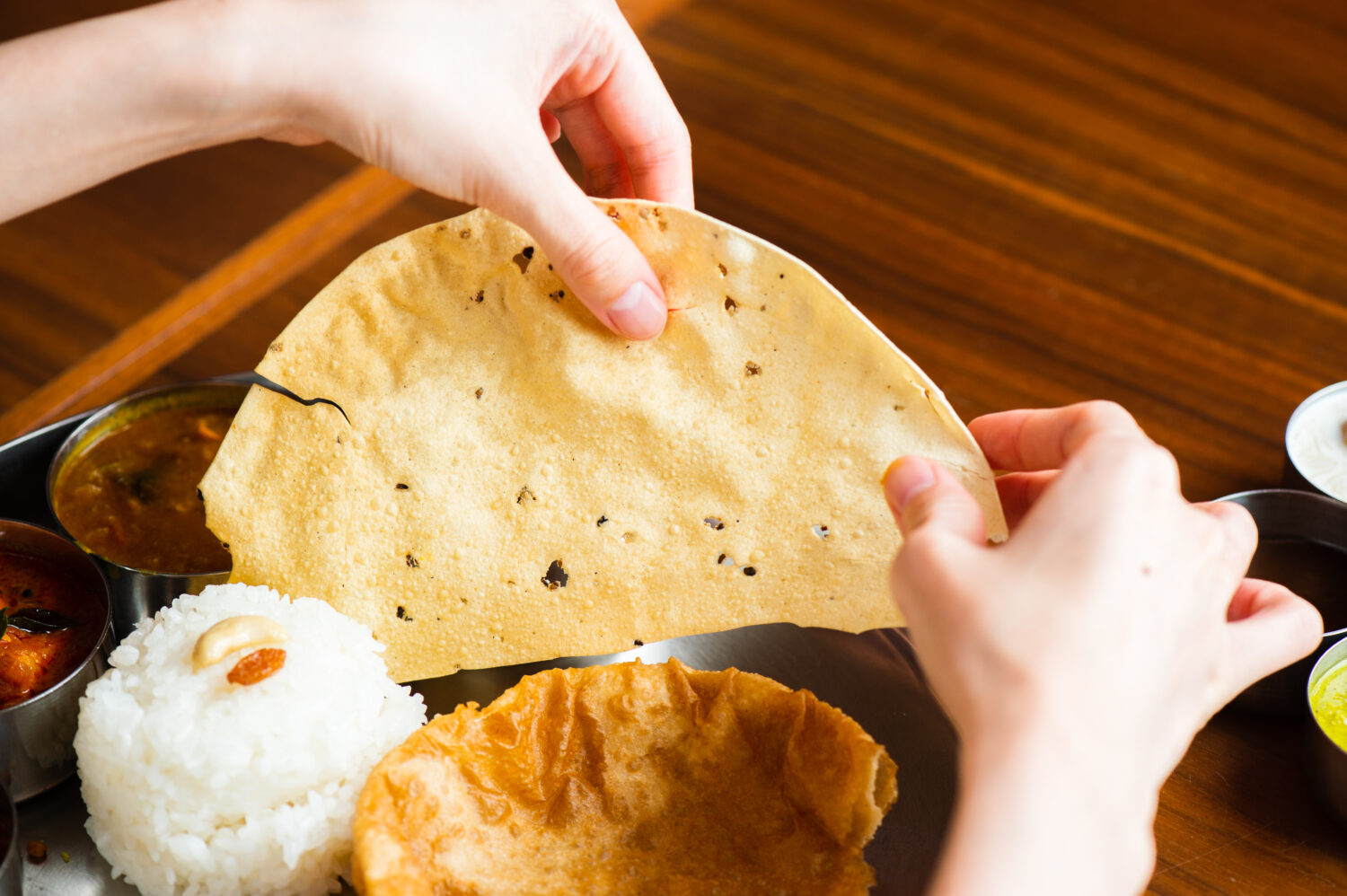
These are crispy chips made from lentils with a spicy kick. Great for adding crunch to rice dishes.

Next is chutney. These are fresh vegetables or fruits simmered with spices into a paste. They cleanse the palate between bites of curry. You can eat them on their own or dip your bread in them—but generally, they’re not mixed into curry!
④ Tomato Chutney
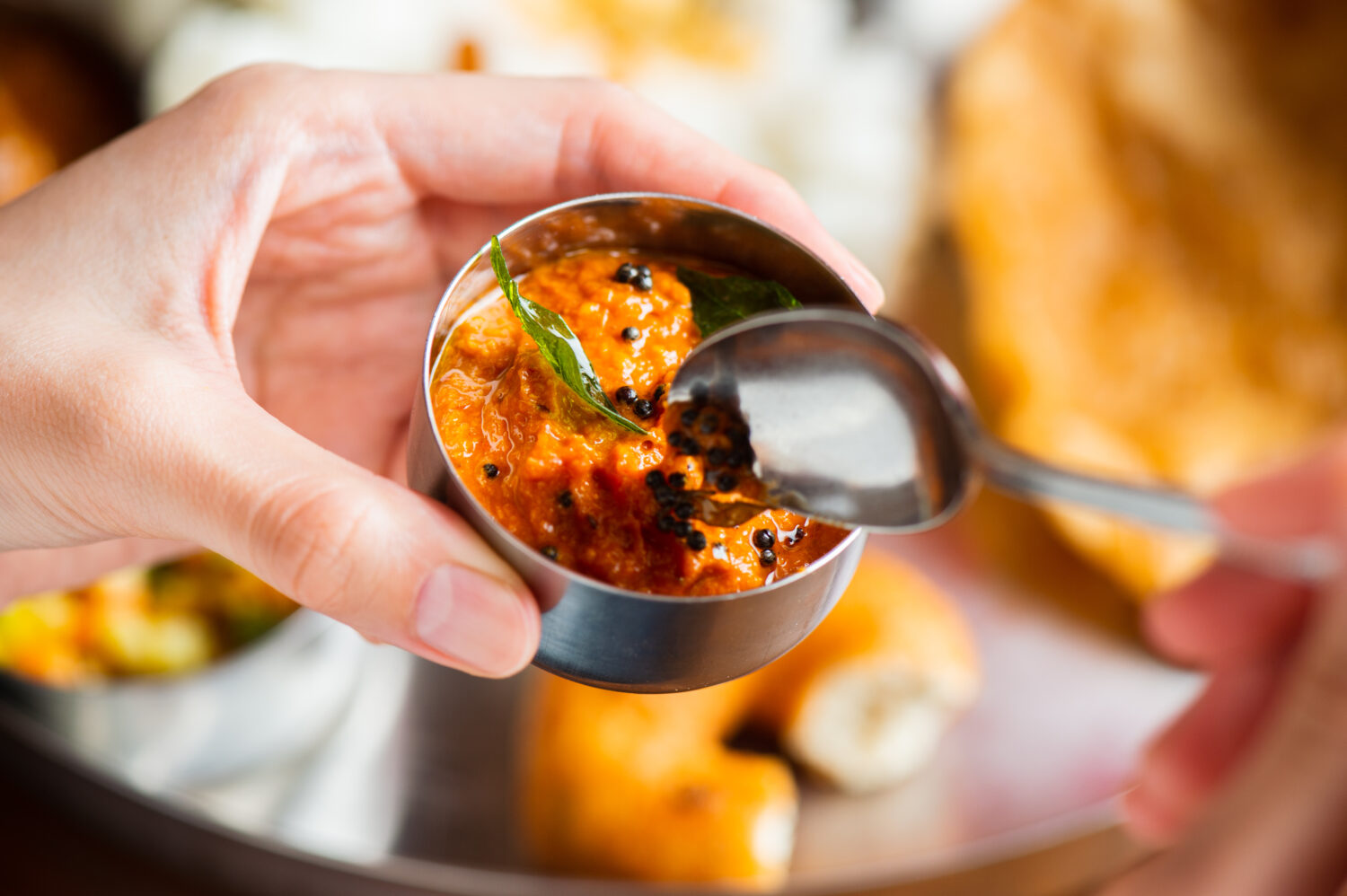
This chutney has a mild flavor and tangy taste from the tomato.
⑤ Mint and Coriander Chutney

Refreshing and light—perfect for resetting your palate.
⑥ Tamarind Chutney
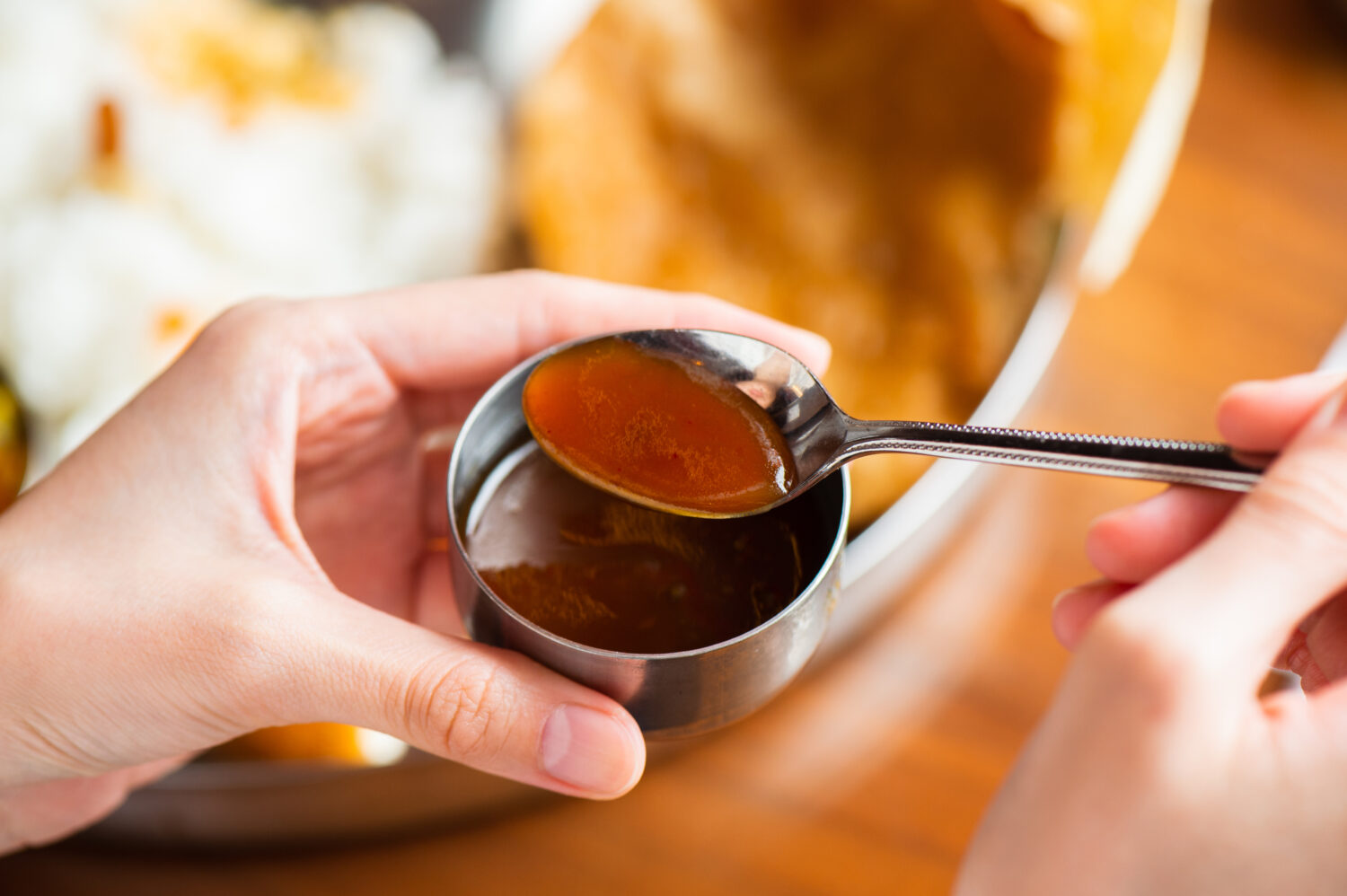
A sweet and tangy jam-like sauce made from tamarind and jaggery (unrefined sugar). Common in South and Southeast Asia.
⑦ Semolina Kheer
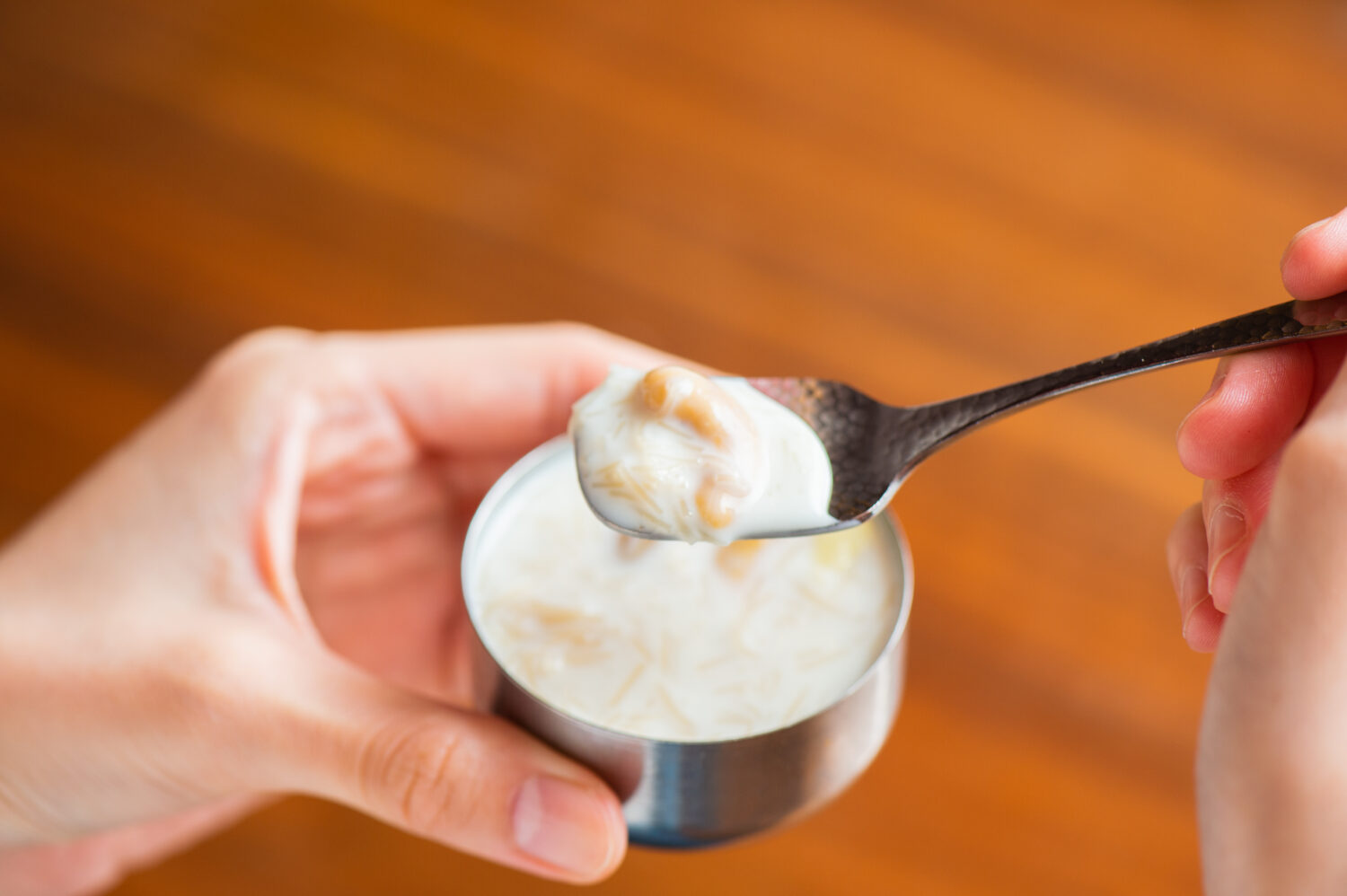
A coconut-flavored milk pudding made with semolina flour. Enjoy it at the end of your meal or in between to cool your mouth from the spices.
Finally, the stars of the show: soups and curries. Ajanta’s thali includes one soup and four types of curry.
⑧ Rasam
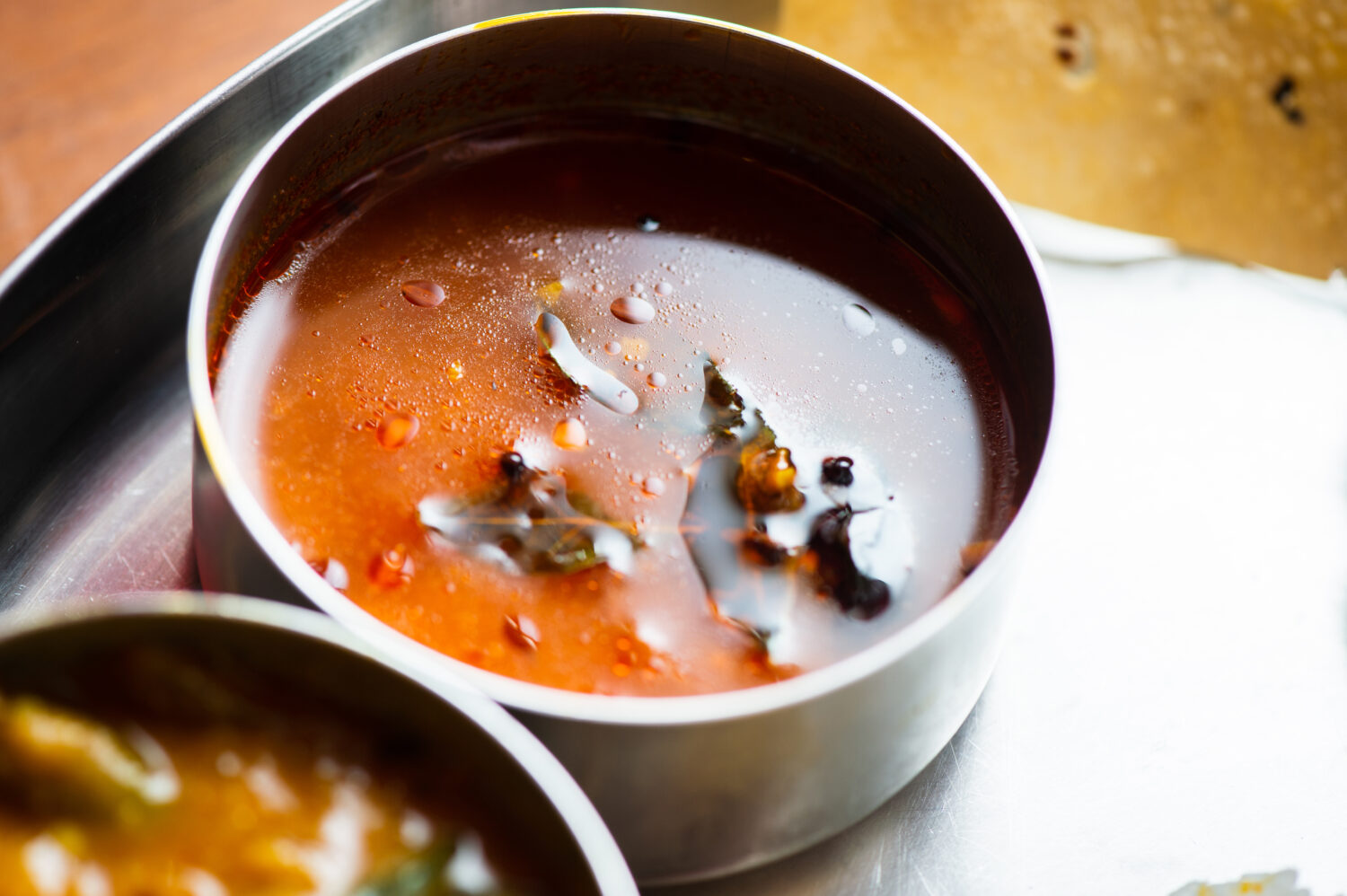
A spicy and slightly tangy soup made with garlic and tomatoes.
⑨ Sambar
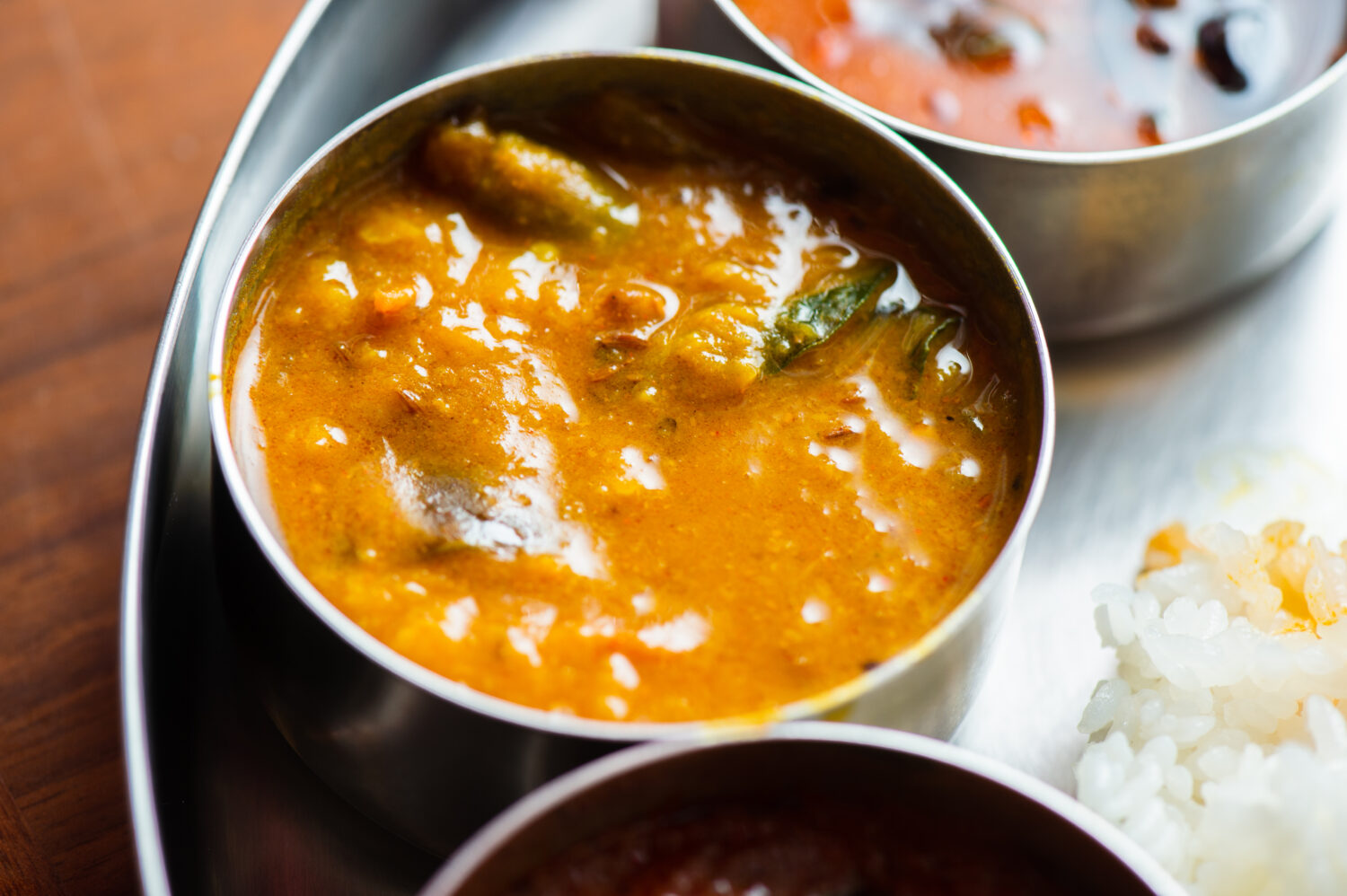
A spicy curry made by simmering lentils and vegetables. Also called “sambal.”
⑩ Fish Curry
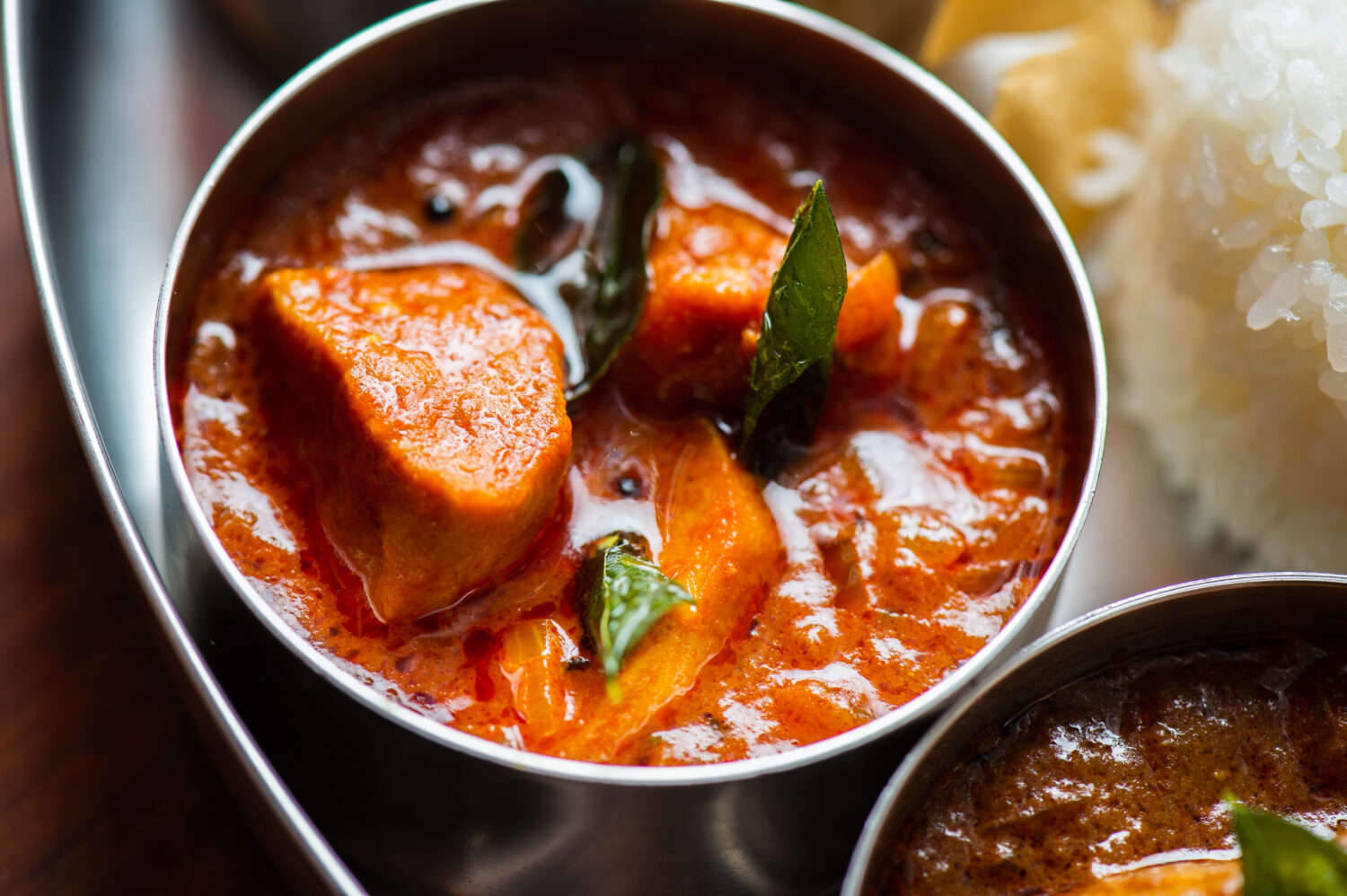
Contains hearty pieces of white fish.
⑪ Chicken Curry
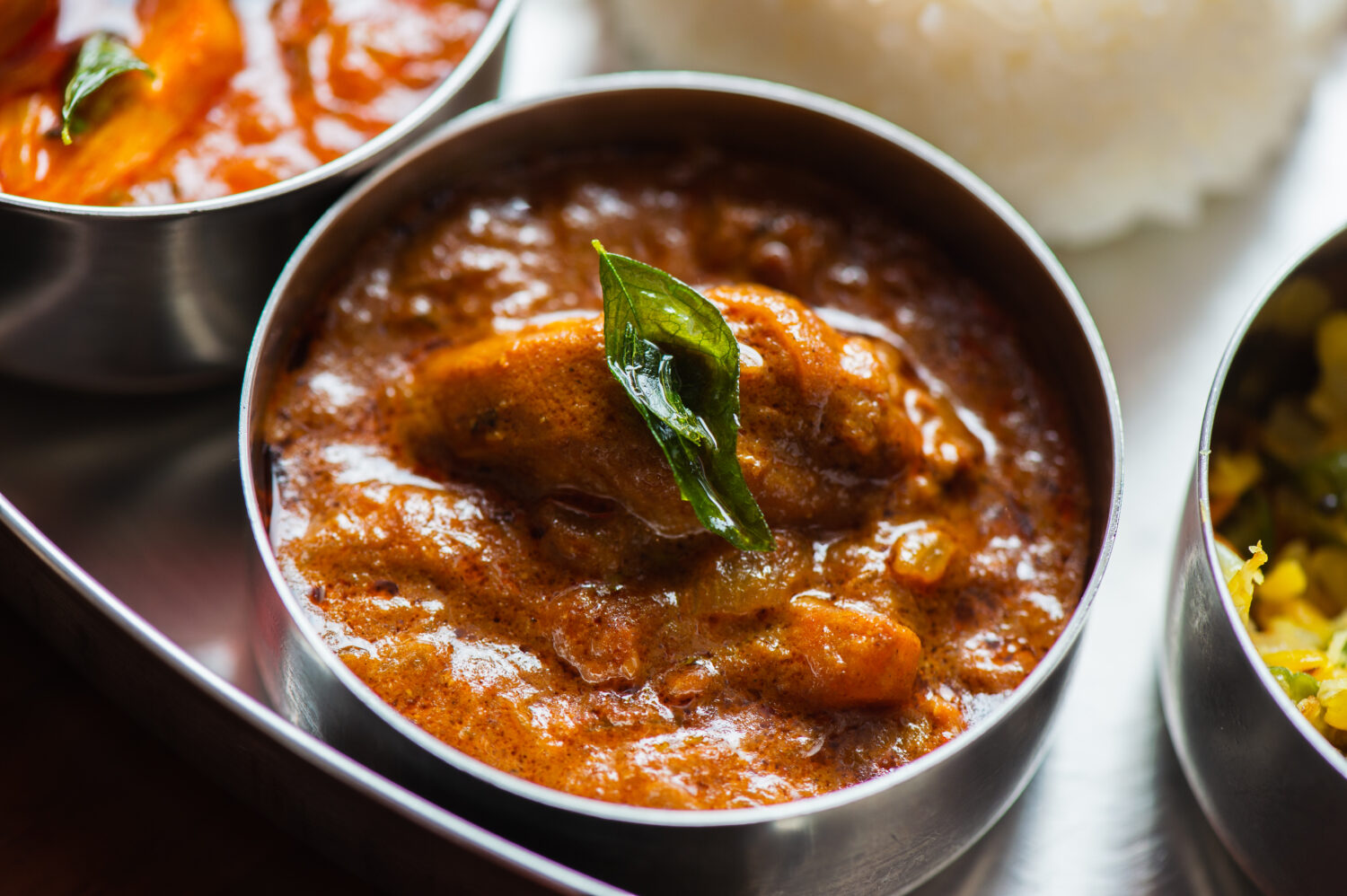
A mild and sweet curry with rich coconut flavor.
⑫ Poriyal
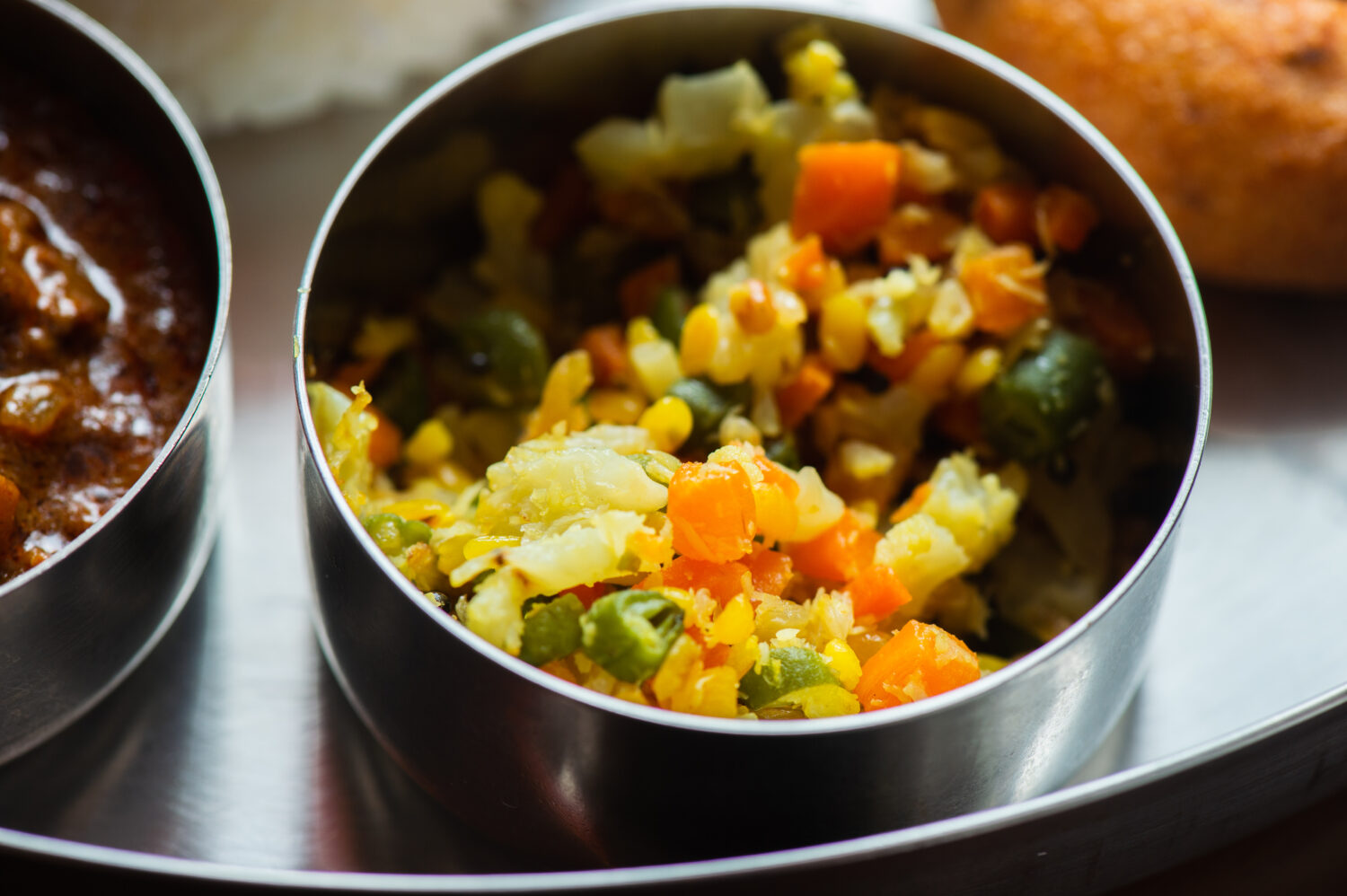
A South Indian dish made of stir-fried mixed vegetables. Technically, it’s also a kind of curry.
The names might be unfamiliar, but don’t worry—you’ll remember them with time!
Wrap Curry with Puri
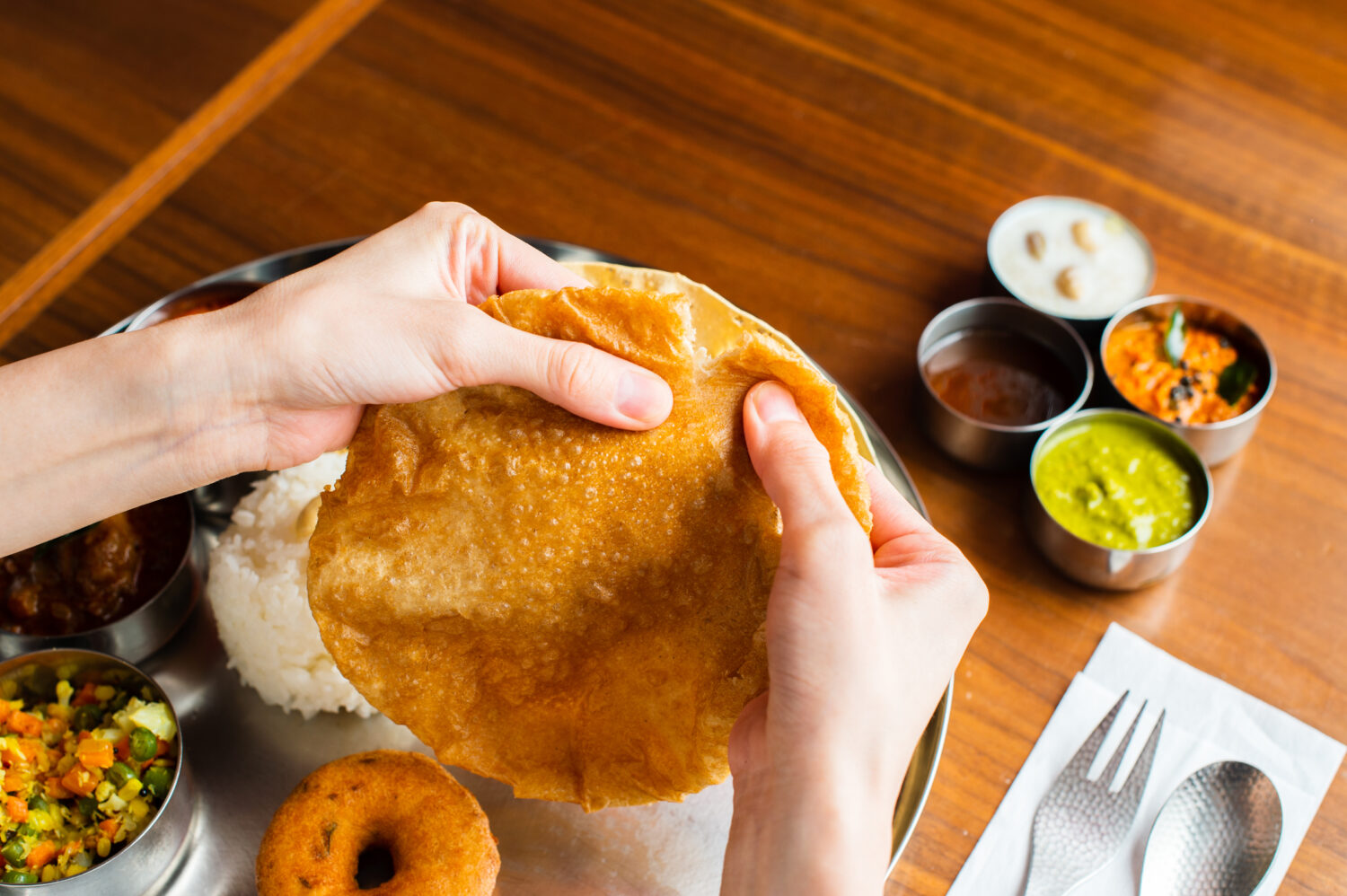
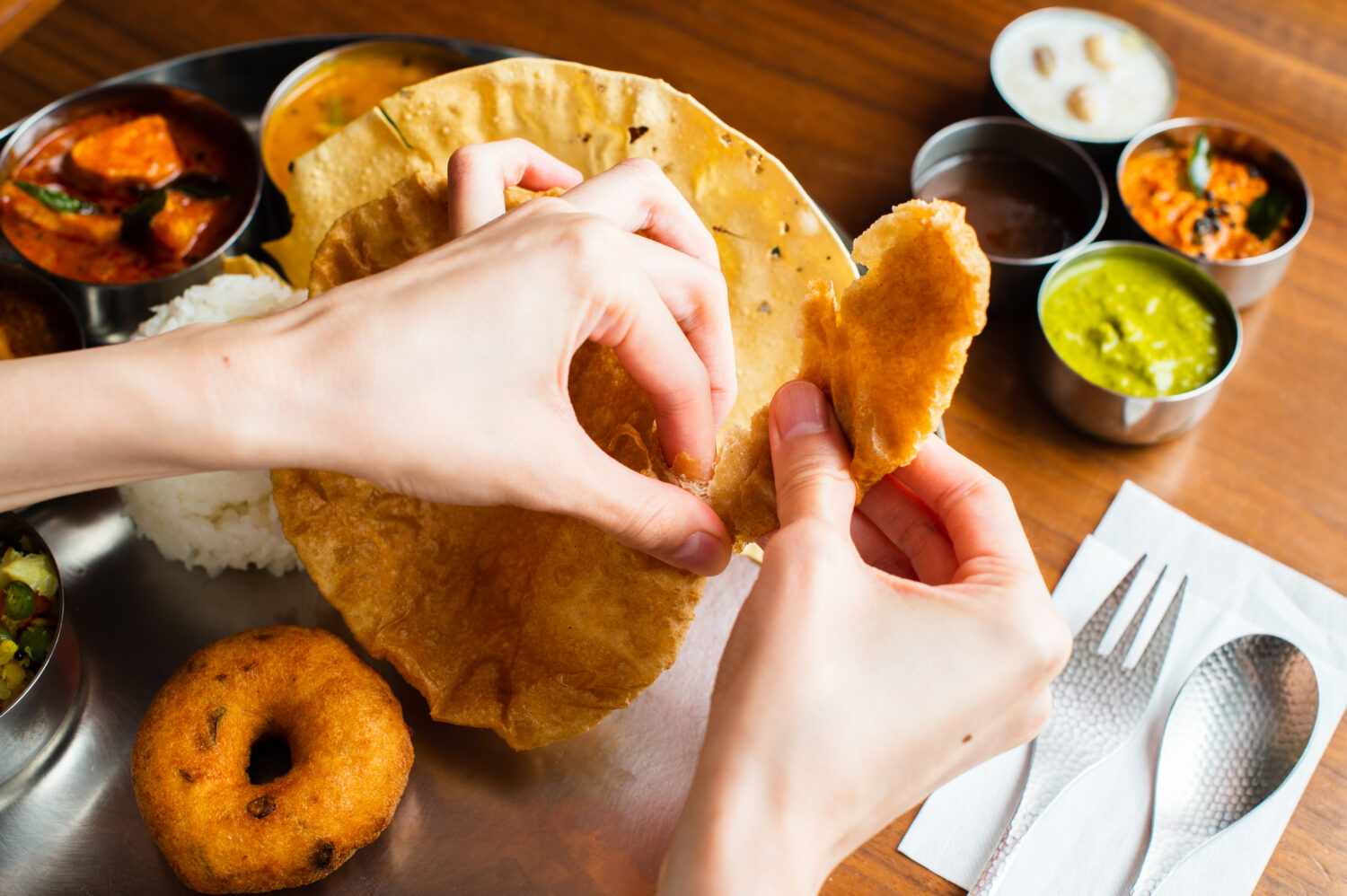
Now that you understand the basics of a thali, let’s start eating! Begin with the fried bread, puri. Tear it into bite-sized pieces using both hands.

It’s best to begin with dry items like poriyal. Use your fingertips to pinch and wrap the food. In India, people typically eat with their right hand only, as the left hand is considered unclean in Hindu culture.
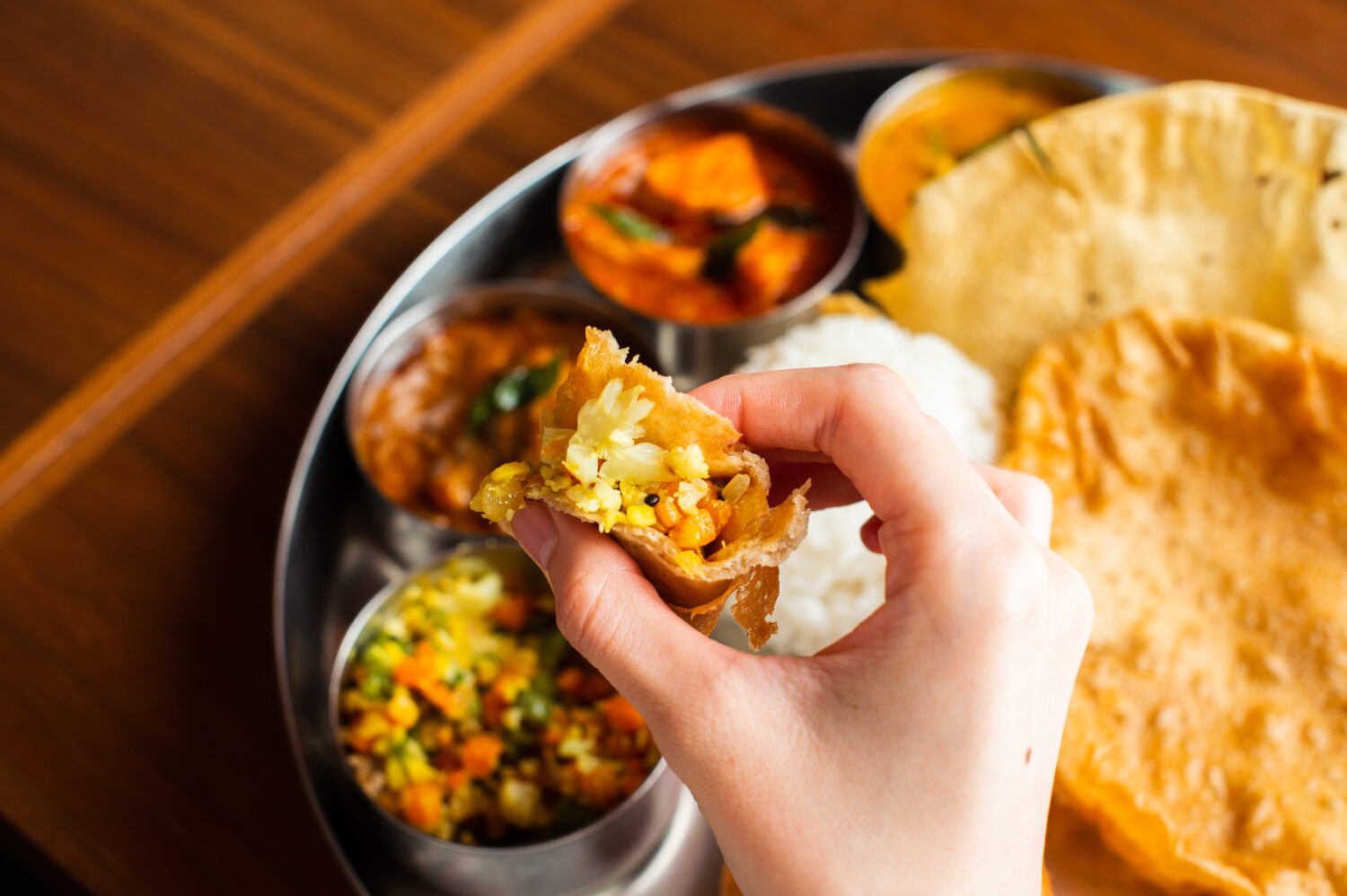
Once wrapped neatly, pop it into your mouth. This method is also great for enjoying large chunks of fish or chicken in curry. Somehow, eating with your hands makes it all the more delicious!
Pour Soupy Curries Over Rice
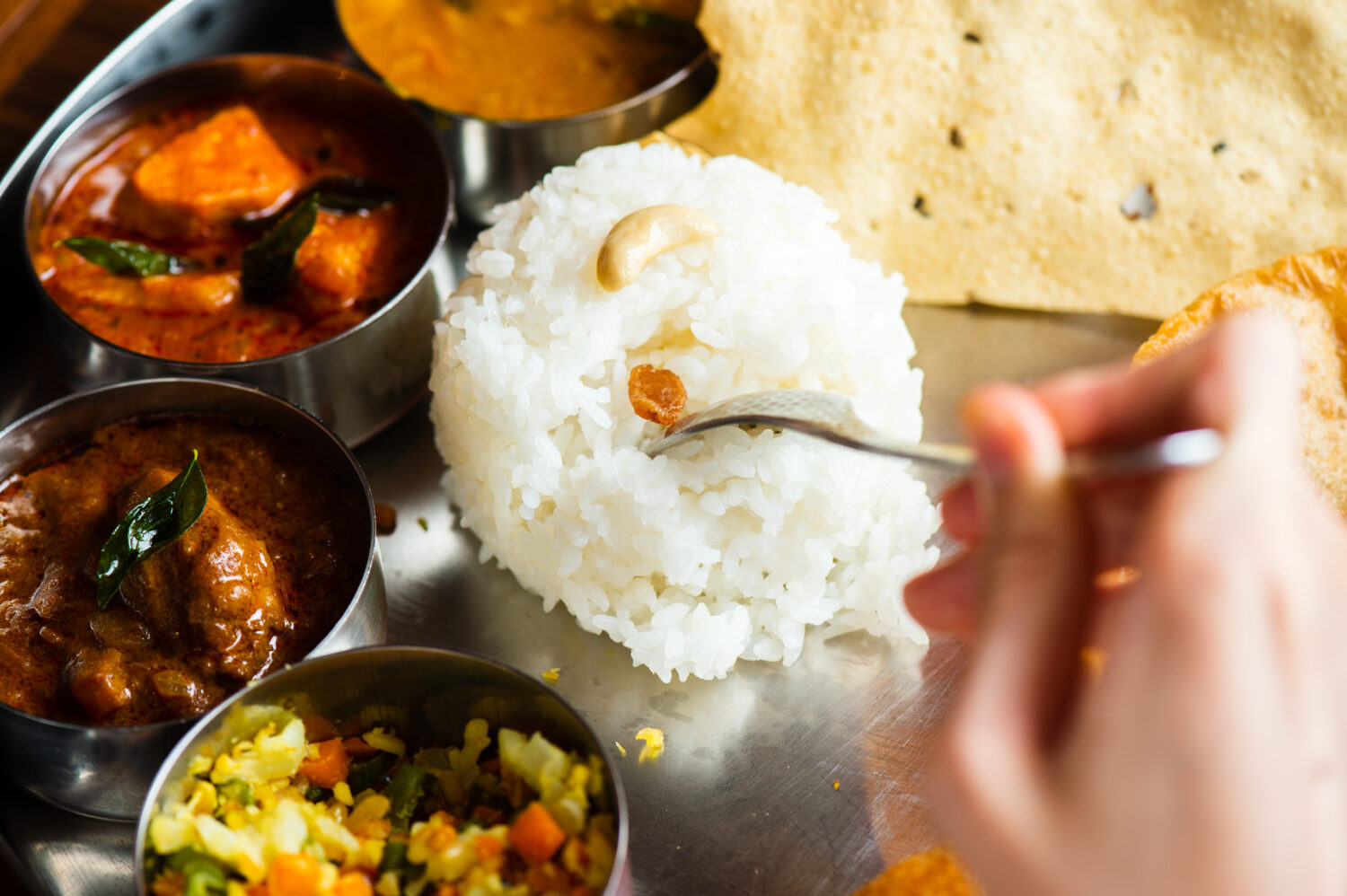
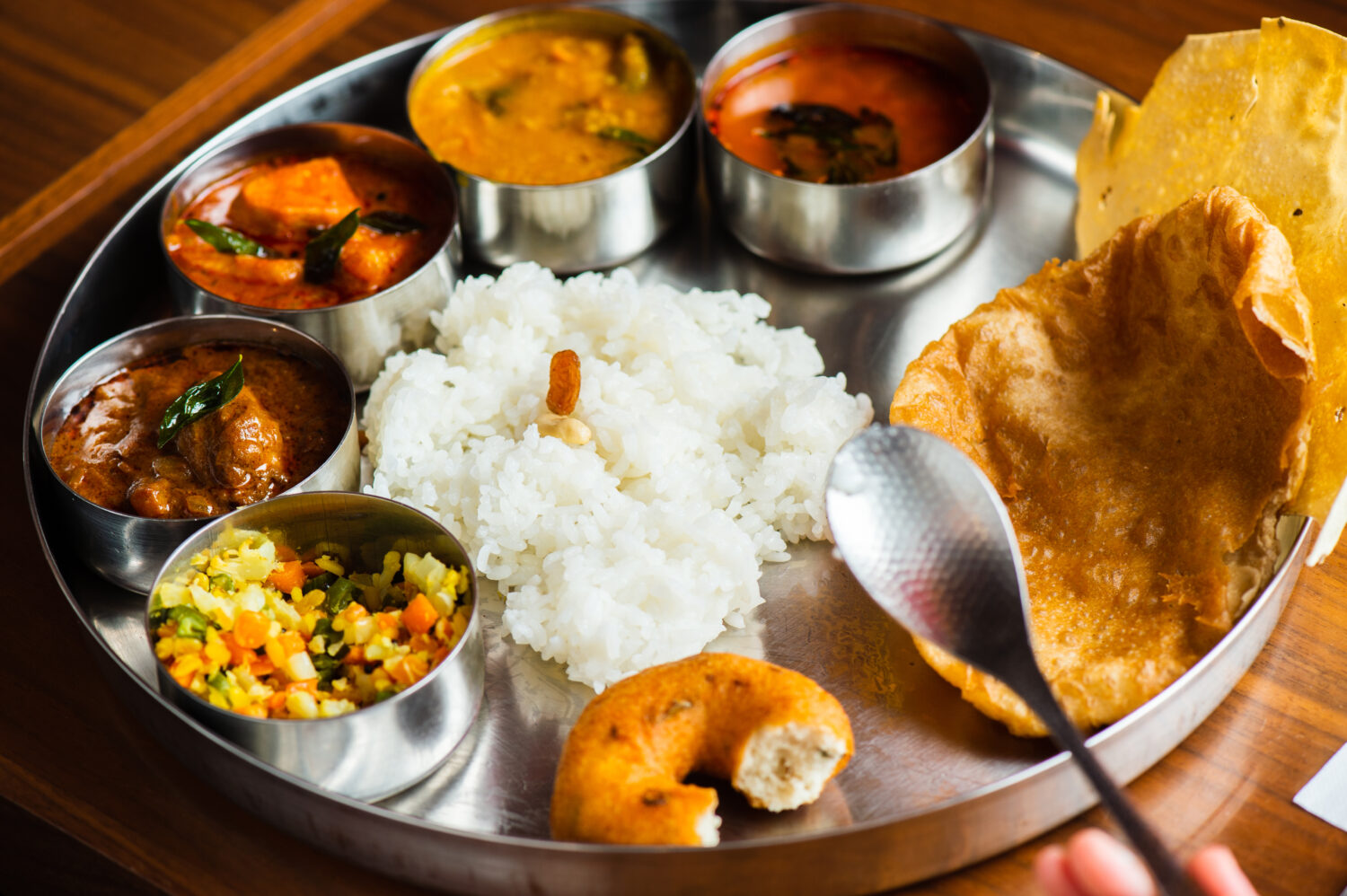
It’s customary to pour soupy curries over rice. First, break up the mound of rice and spread it out. This helps you savor the distinct flavors of each curry.

Scoop a small amount of curry with a spoon and pour it over the edge of the rice. Enjoy each curry one at a time.
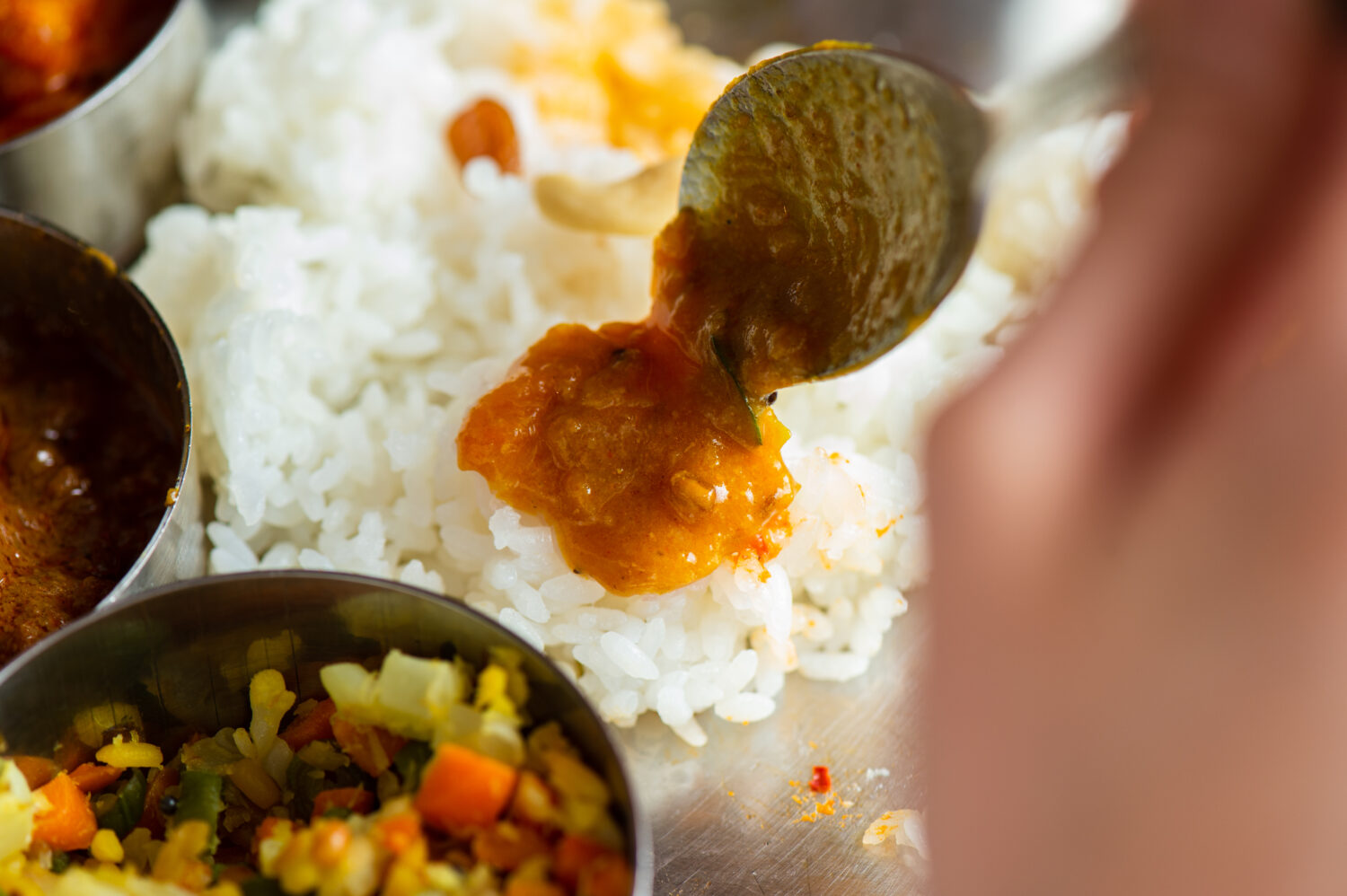
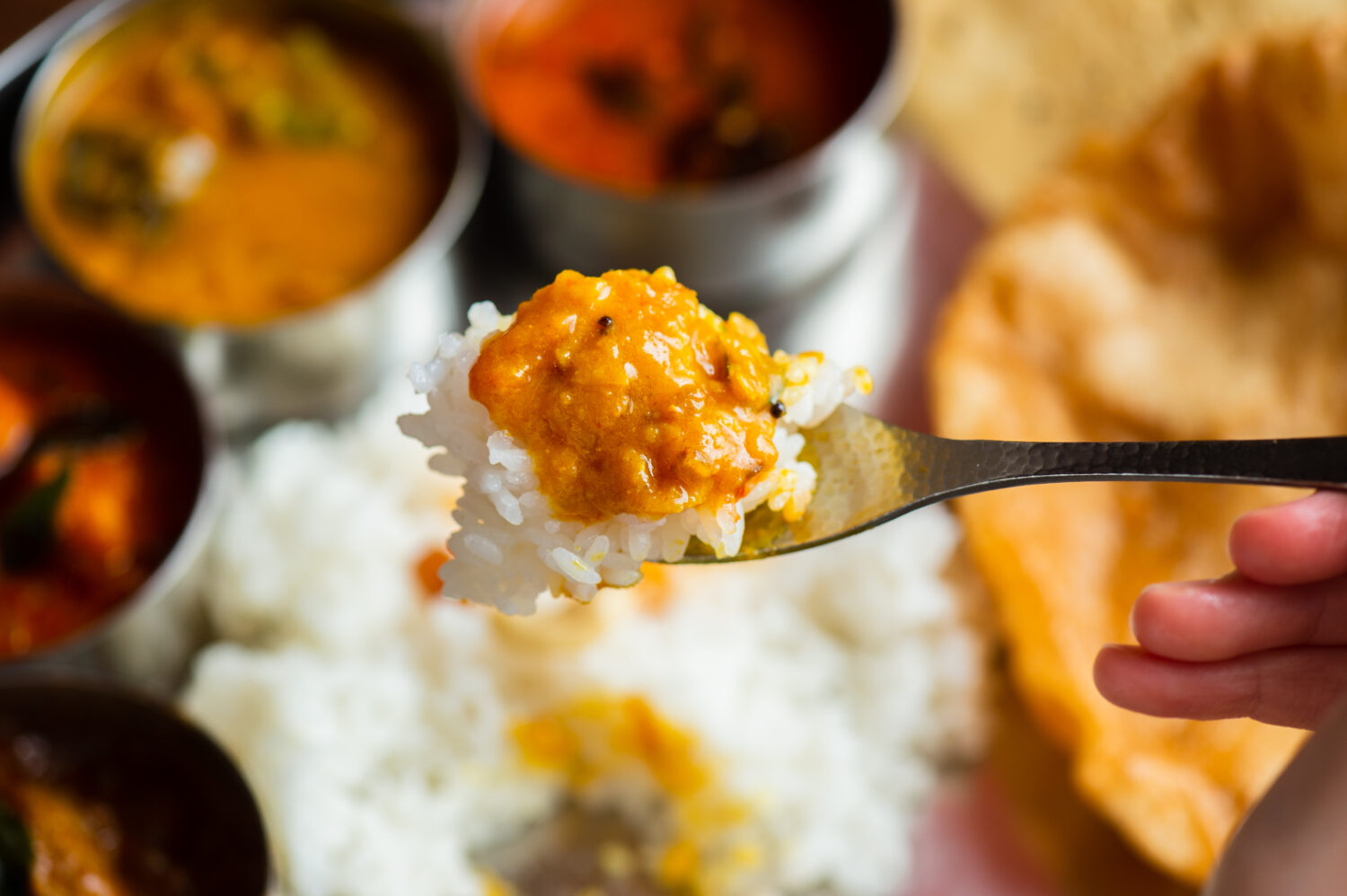
By spreading the rice, you’ll be able to fully appreciate the unique flavors of each curry.
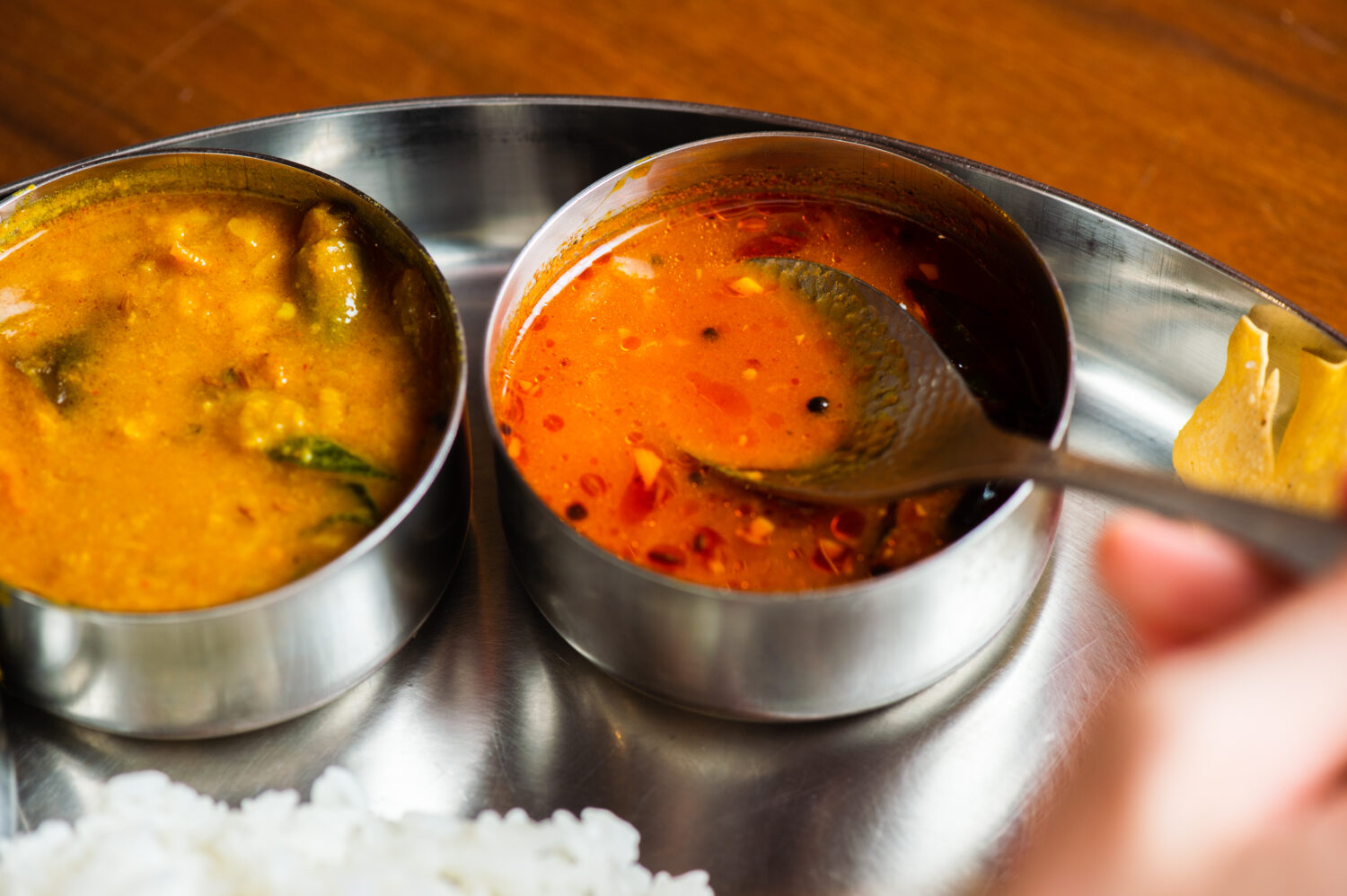
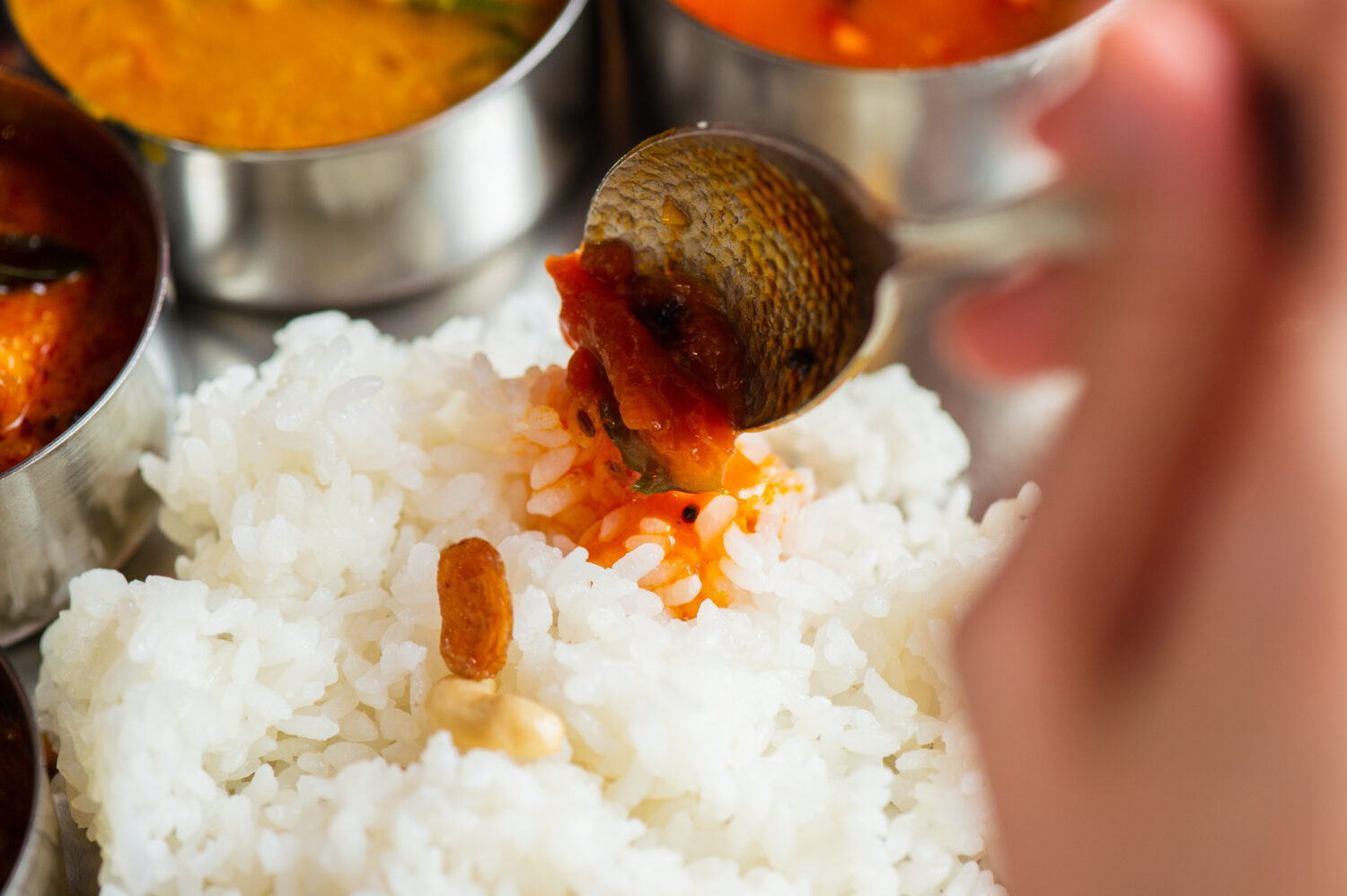
Plan your rice area well so you can enjoy all the curry types. At the end, mixing them all together is totally fine too—that’s part of the fun of a thali!
Chutneys Are Eaten as Is
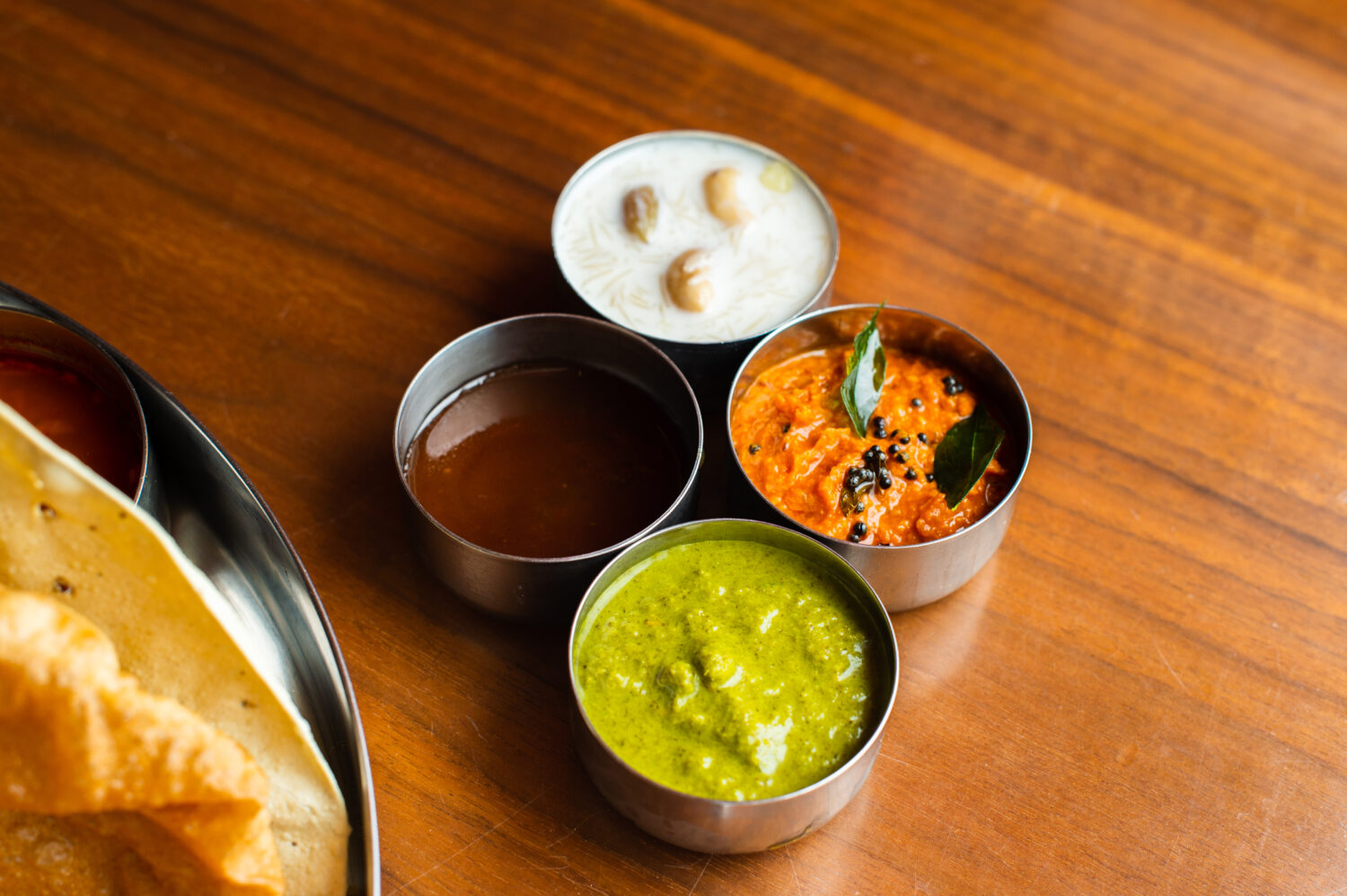
Chutneys removed from the thali are usually eaten as-is. Enjoy them between curries to calm the lingering heat in your mouth.

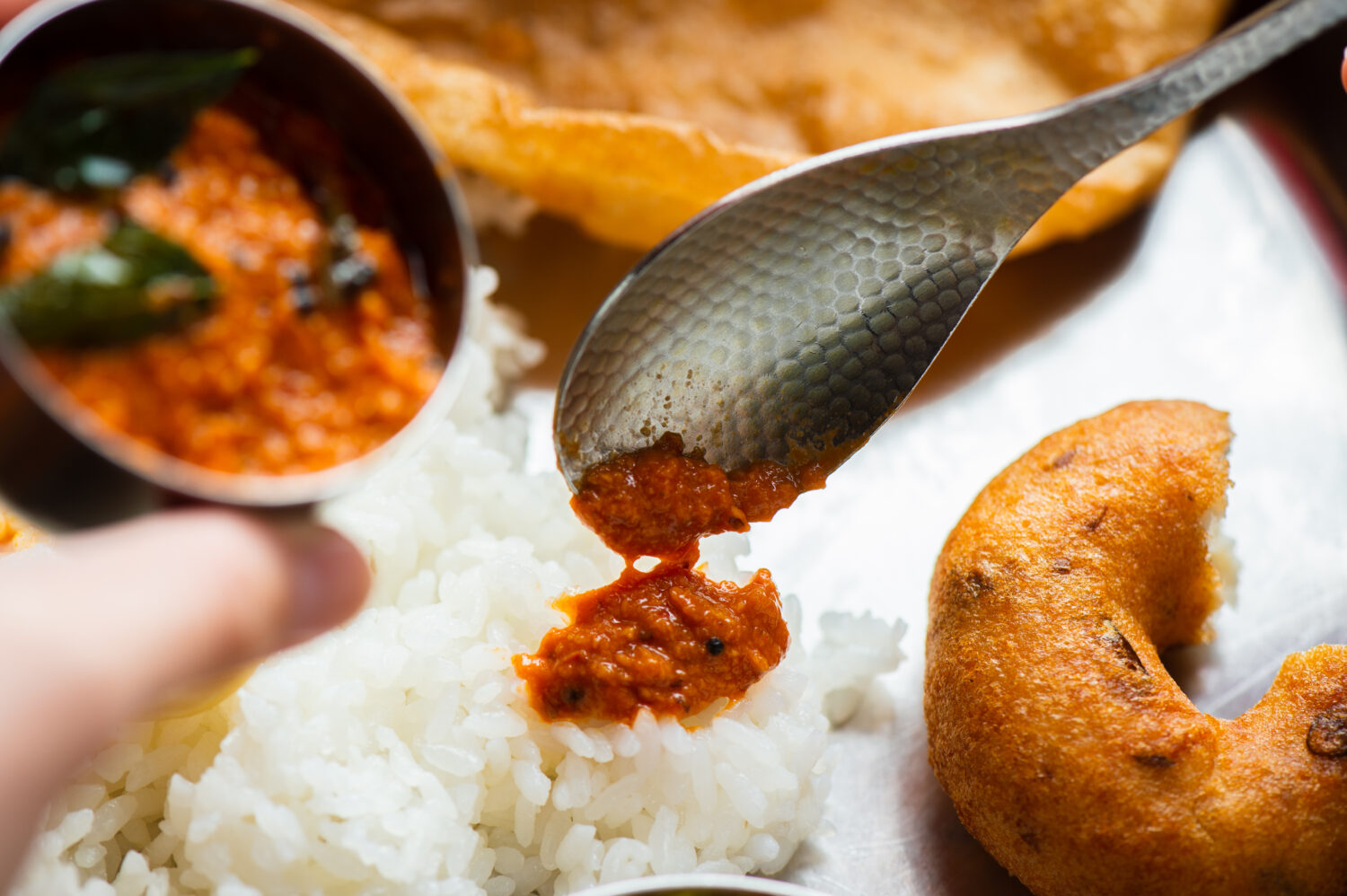
Tomato-based chutneys can also be poured over rice for added flavor.
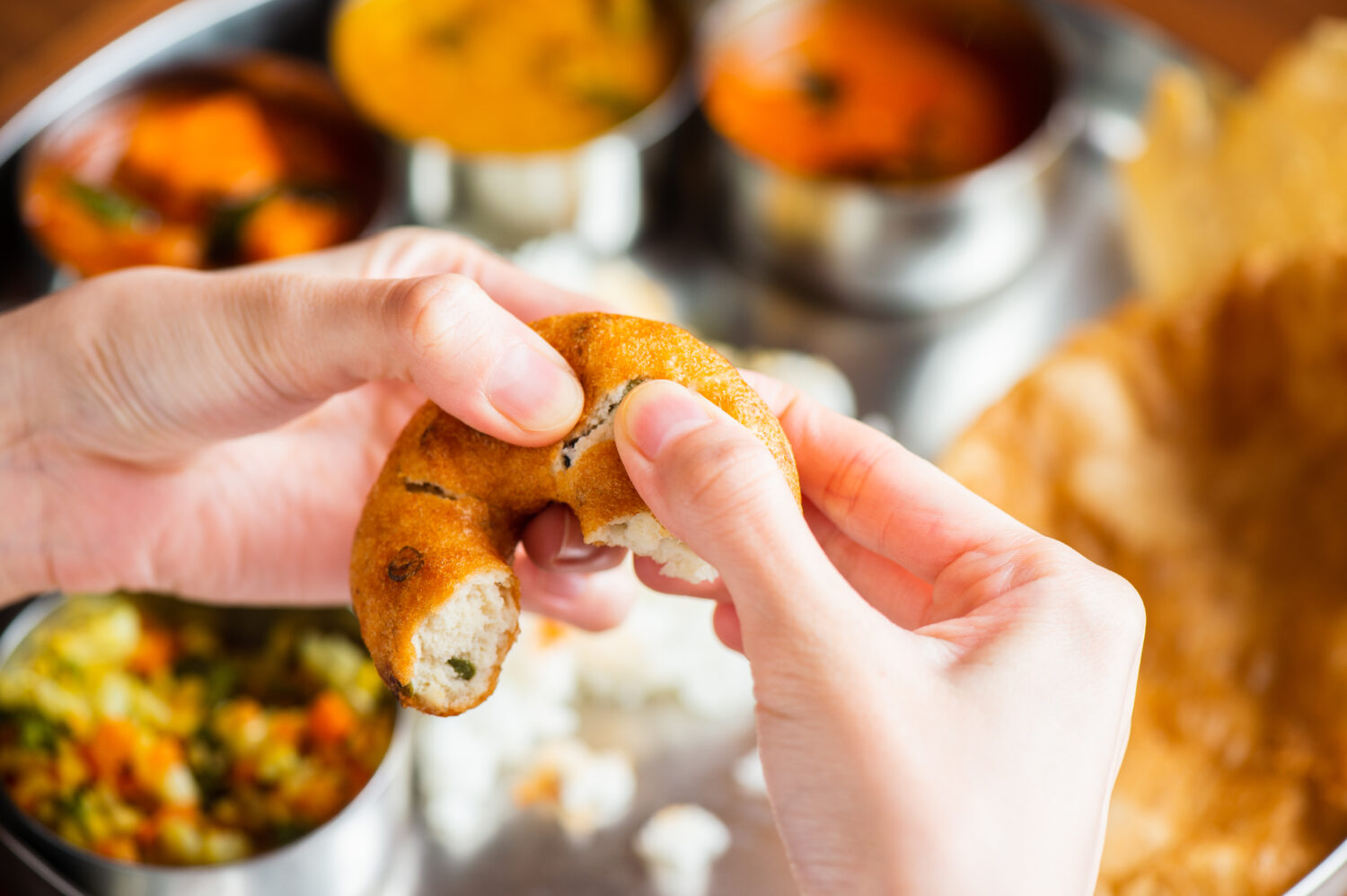
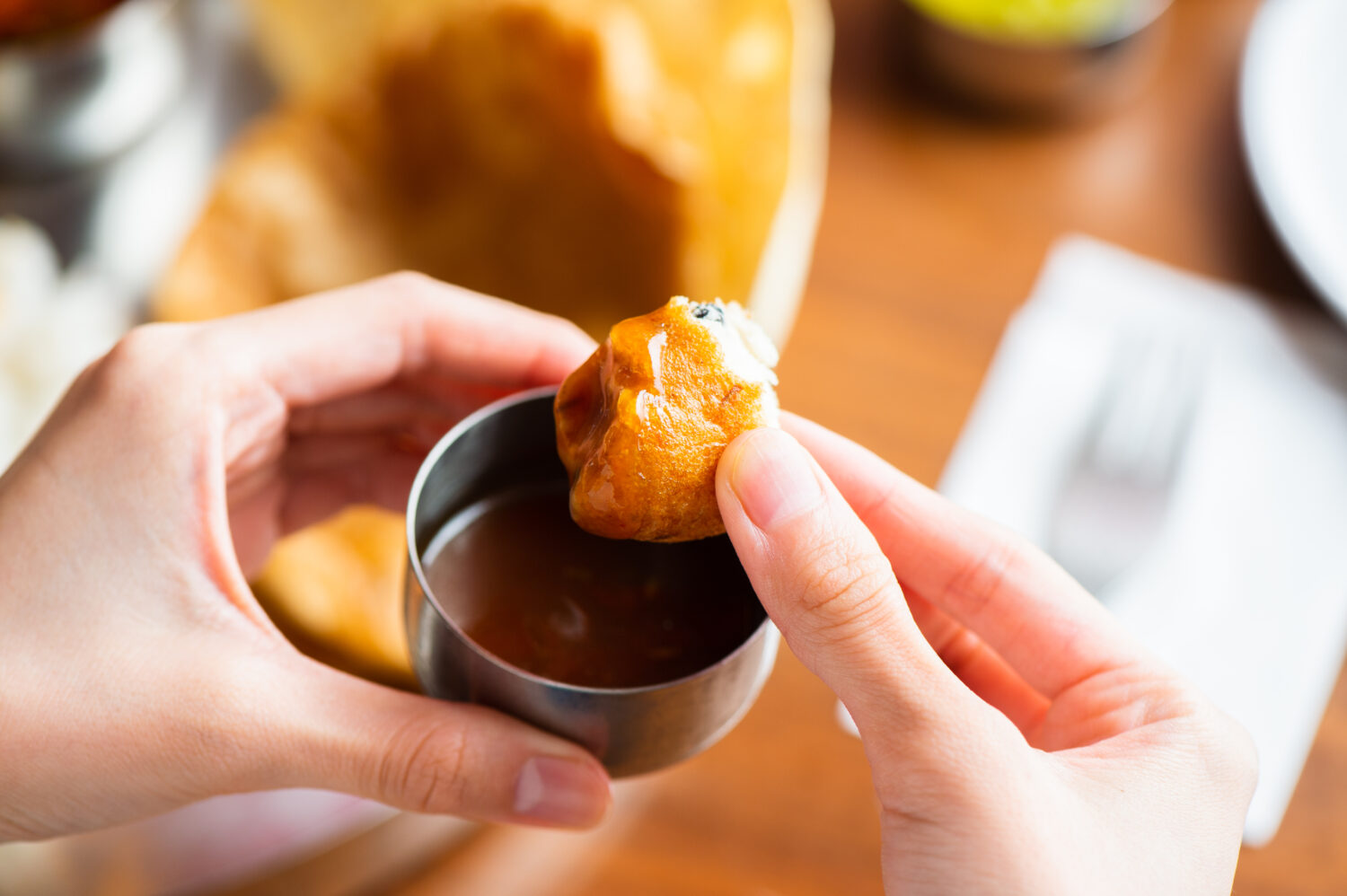
The sweet and sour tamarind chutney goes perfectly with vada. You could even enjoy it like a dessert!
Papad as a Flavor Booster
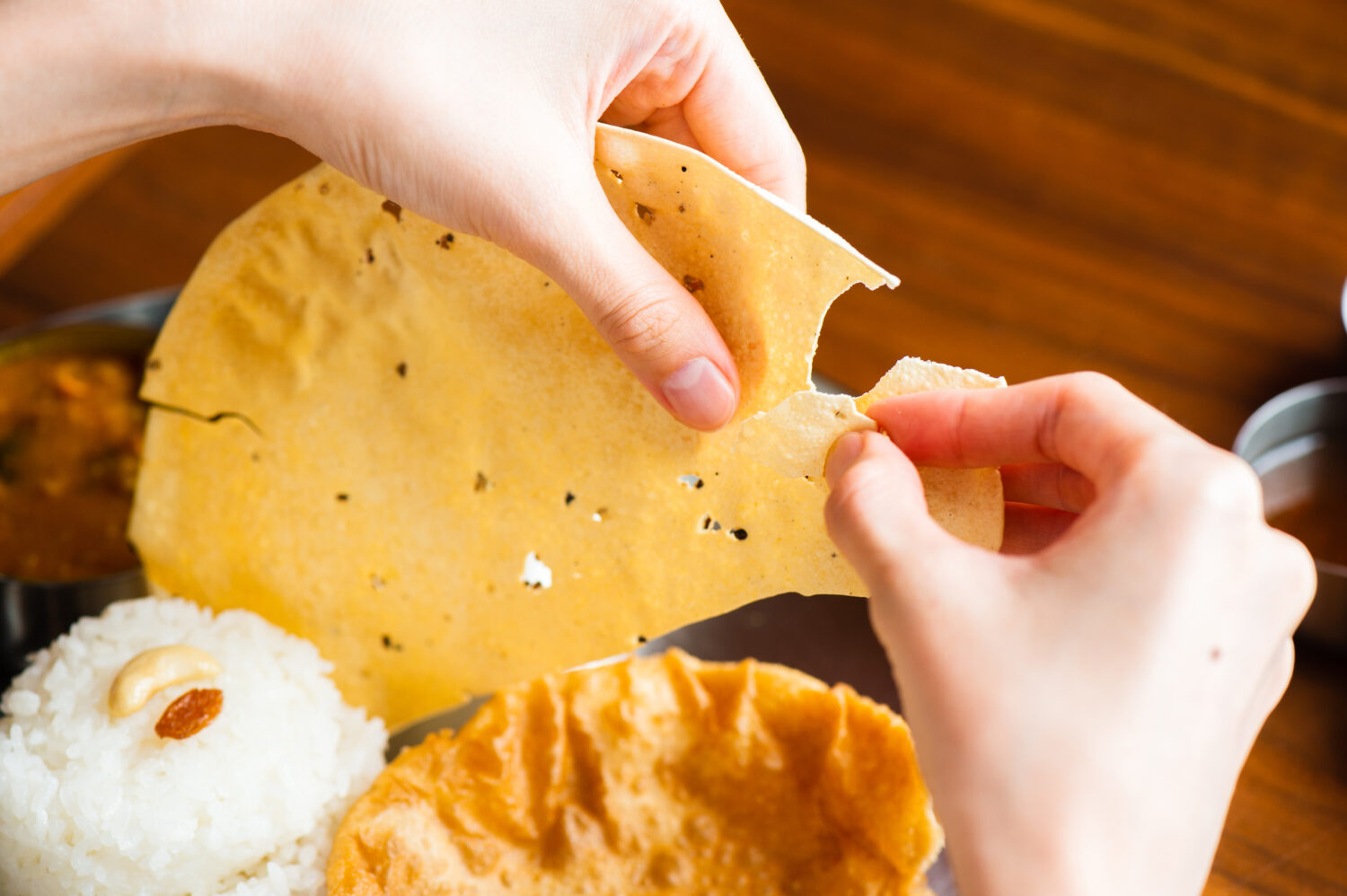
Break up the papad and sprinkle it over rice for extra crunch and flavor. Its crisp texture is a great contrast to the softer elements of the thali.
Finish with Sweet Milk Porridge!

For dessert, have the kheer (milk porridge)! Some prefer to save it for last, but it’s also a great palate cleanser mid-meal. Its sweetness helps tame the heat of spicy curries.
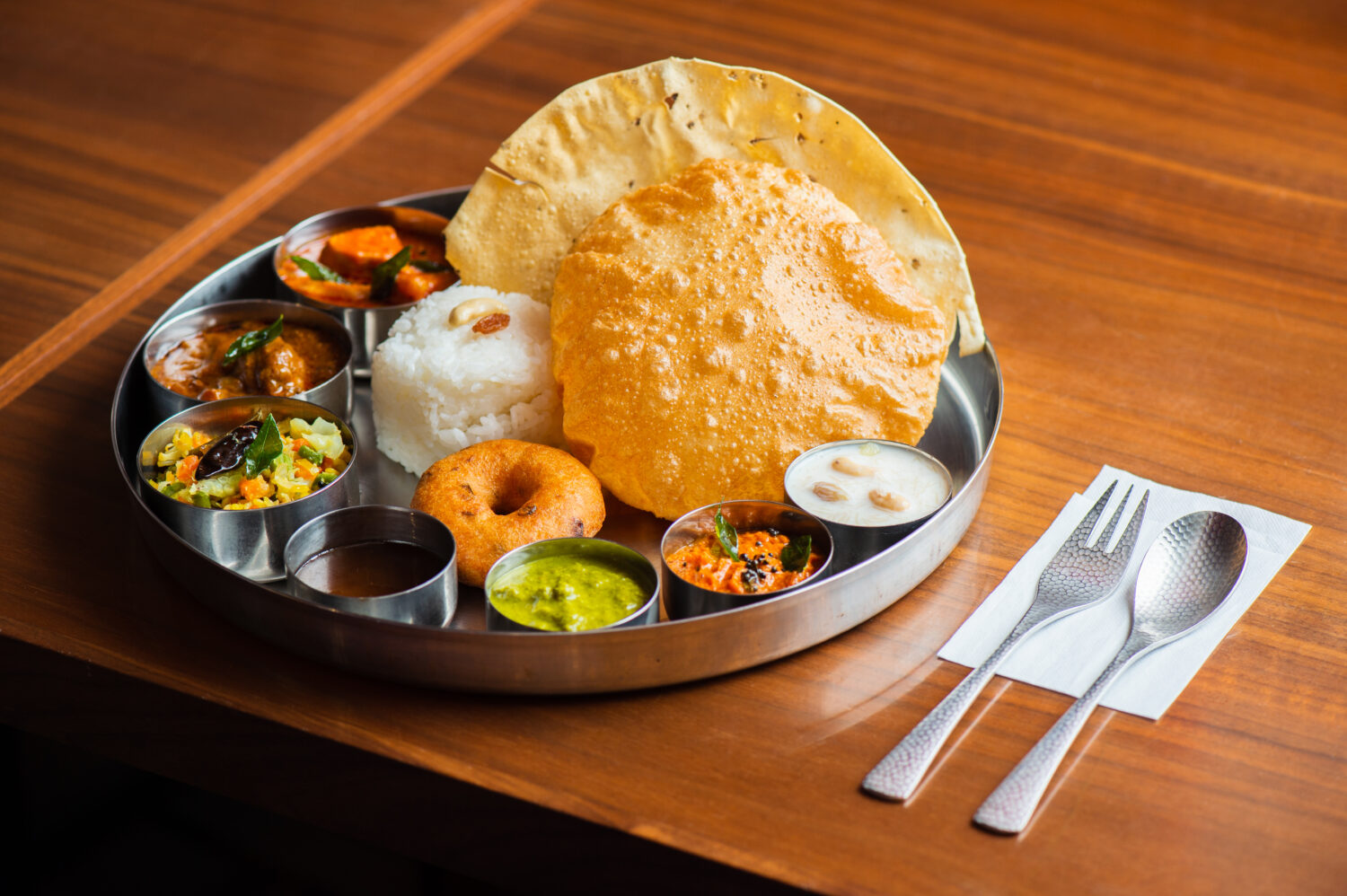
In Japan, it’s rare to enjoy several curries in a single meal. Sampling four different curries in a thali really made me appreciate the incredible depth that different spices can bring to each dish.
Be sure to visit Ajanta and try authentic Indian curry. Once you taste it, you’ll definitely be hooked!
Founded in 1957 by Jaya Murthy, this restaurant serves authentic South Indian cuisine. Driven by the desire to let Japanese customers experience the pure flavors of his South Indian homeland, he has never adapted the dishes to suit local tastes. Since its opening, the restaurant has been loved by many for its unwavering authenticity.
*The information is based on the time of reporting or creation, and may differ from the current situation.
tags:
share:











